4 Ways to invest in our planet this Earth Day
- Home
- 2022 (
- Page 2 )
[Post Date]
4 Ways to invest in our planet this Earth Day

Climate change is one of the most pressing issues of our generation. Even as governments around the world make pledges to reduce carbon emissions and build a greener tomorrow, the latest Intergovernmental Panel on Climate Change (IPCC) report warns that these promises may not be enough.
According to United Nations Secretary-General Antonio Guterres, “current climate pledges would still mean a 14% increase in emissions”. The signs are clear – to make a lasting change and preserve our planet for our future generations, each of us would need to do our part to make a difference.
Happening on 22 April and aptly themed “Invest in Our Planet”, this year’s Earth Day brings to focus the time and effort that we all need to invest to build a green and prosperous future. As we celebrate this home that we call Earth, we’d encourage you to take a stand and make a green difference to our planet. There is no time like now to take action and here are four ways that we can do so:
1. Inculcate green habits in your children
Children are the leaders of tomorrow. Someday, they’ll grow to become policy makers of the world and be the ones who will continue guiding future generations to protect our planet. As we nurture our children holistically, investing time to teach them about sustainability and inculcating green habits within them from a young age cannot be neglected.
While schools in Singapore are taking a step in the right direction by gradually introducing sustainability-based initiatives within their curriculum, children are known to pick up habits and cues more easily from home. As parents and caregivers, why not set a good example for them by cultivating some green habits?
These can include simple habits like switching off lights that are not in use, opting to bring a reusable water bottle or choosing to recycle our recyclables such as old plastic bottles, paper scraps and cardboard boxes. Through such everyday efforts, this helps in establishing positive behaviours within our children from a young age, making it second nature for them to live sustainably!
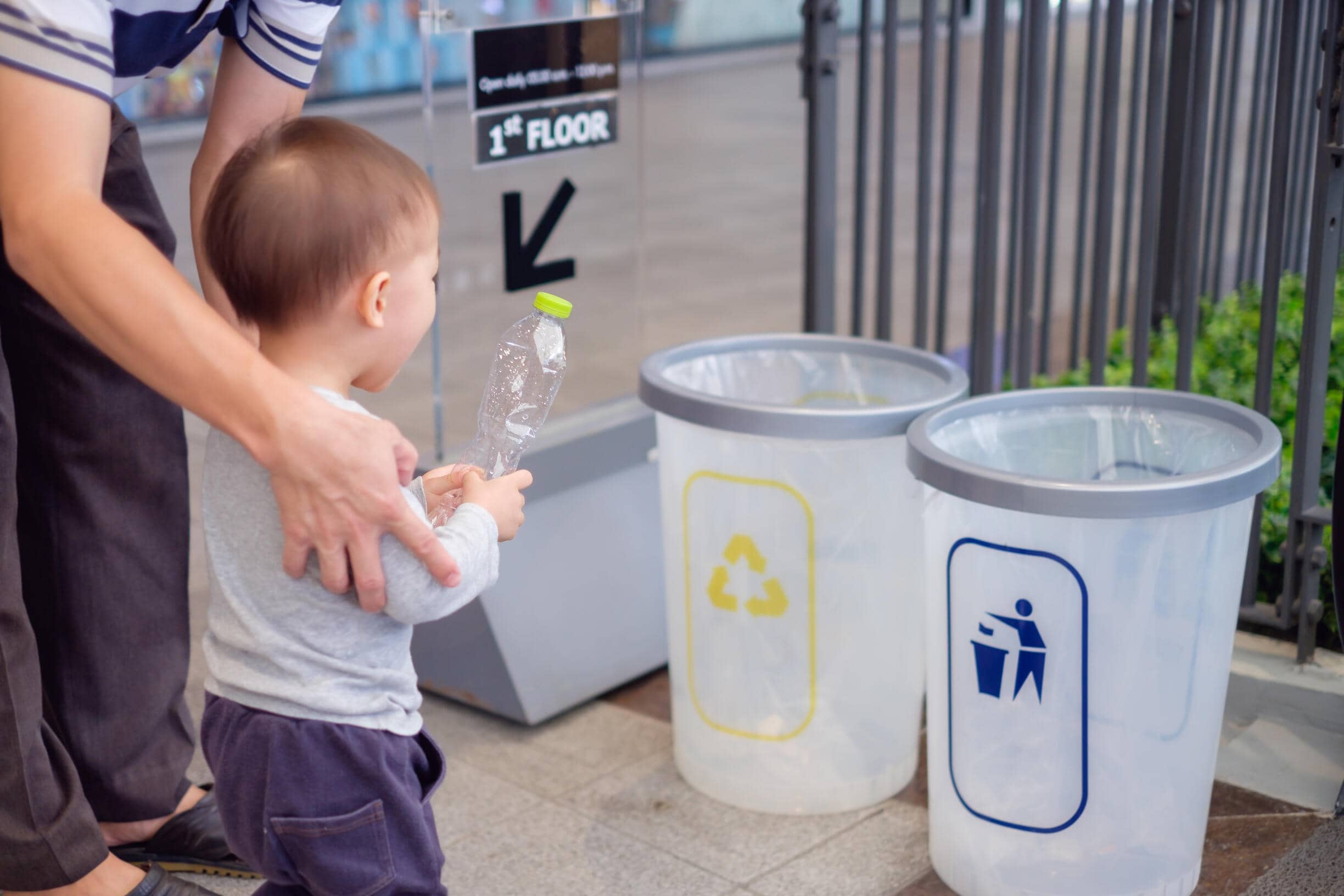
Image Credits: Nylon Coffee Roasters
Taking a step further, we can also make a mindful decision to incorporate more time outdoors for our kids. According to research, it uncovered that individuals who are more exposed to nature made more green choices; unsurprising given the natural appreciation we build when we’re immerse in the sights and sounds of our outdoor environment. So, grab those hiking shoes and head out for a walk with your kids!
In addition to spending quality time with your child, take this opportunity to also show them the beautiful green spaces of Singapore while clocking in some fun and healthy exercise.
2. Volunteering at organisations that conserve our environment
This Earth Day, choose to pay it forward through the simple act of volunteering. Contrary to popular belief, some forms of volunteering do not take up much of our time. For instance, our ChangeMaker Green Nudge regularly organises beach clean-ups that warmly welcomes new participants!
These short-term volunteering activities, otherwise known as micro-volunteering, are a great way to contribute back to our planet while spending time meaningfully with our loved ones. By participating in these beach clean-ups, we help to save any trash, such as plastic bags, metal drink cans and cigarette butts, that would otherwise pollute our water bodies and pose as a threat to unknowing animals, ensuring that these beautiful spaces remain enjoyable for generations to come.
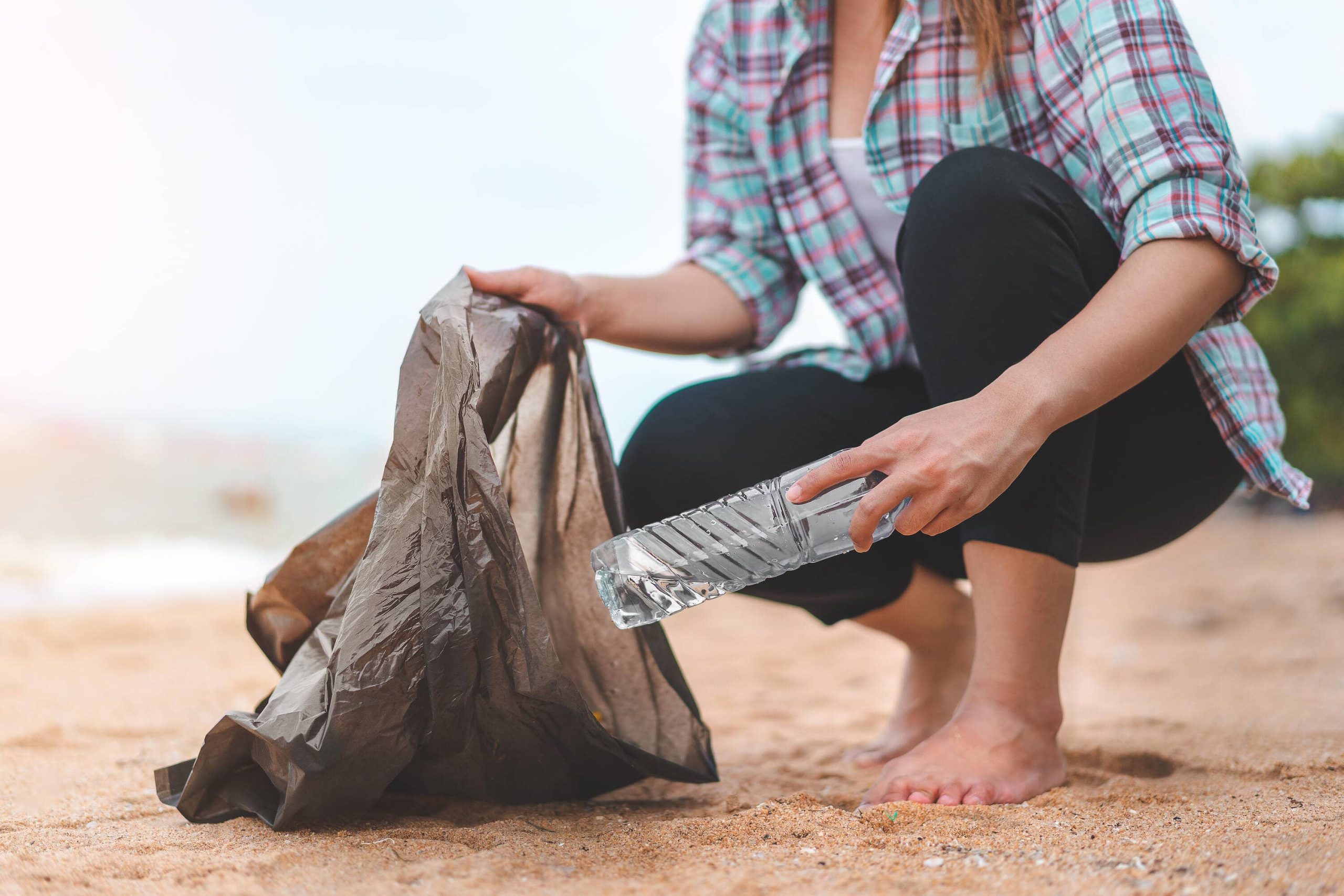
Source: The Sustainability Project
But, if you’re looking to commit on a longer-term basis, we have the perfect option for you too! For animal lovers, check out our very own Mandai Wildlife Reserve that has great volunteering programmes for people of all ages. With roles such as a conservation ambassador, event volunteer and docent, each of these opportunities are a great way to share your love for nature and wildlife with members of the public, seeding in them a newfound appreciation for wildlife conservation.
Alternatively, if you lean more towards promoting and maintaining Singapore’s natural heritage – look out for the various volunteering opportunities with NParks! With its range of roles that allows you to work with different aspects of Singapore’s green spaces, we’re sure that you’ll be able to find one that’s your cup of tea. Catered to individuals of all background, take an active role and be part of Singapore’s journey as we build to become a City in Nature.
3. Choosing to offset your carbon emissions
While one of the smallest countries in the world, did you know that Singapore ranks 27th out of 142 countries in terms of emissions per capita? That’s a surprising statistic! With our Earth rapidly heating up due to these planet-warming gases, each of us have a key role to play in reducing these emissions through our everyday lifestyle choices.
There are many ways which we can do so and one of the easiest is to minimise the amount of trash that we produce! In an article published by The Straits Times, an estimated total of 1.58 million tonnes of carbon emissions is released annually from our landfills alone. We can make a big difference simply by reducing the amount of trash we produce. For instance, bringing a reusable container when we order takeaway or recycling our plastic bottle can help to bring our carbon emissions down by at least 60% and 30% respectively!
Besides reducing our waste, you can also take advantage of Singapore’s well-connected routes and choose to walk or cycle! Instead of driving to the nearby supermarket to make your grocery runs, grab your bike for a leisure cycle or even take a slow jog! With such small lifestyle changes, not only will it help in reducing your carbon footprint – by up to 67% according to Bloomberg – you may even find yourself getting fitter over time – definitely a win-win!
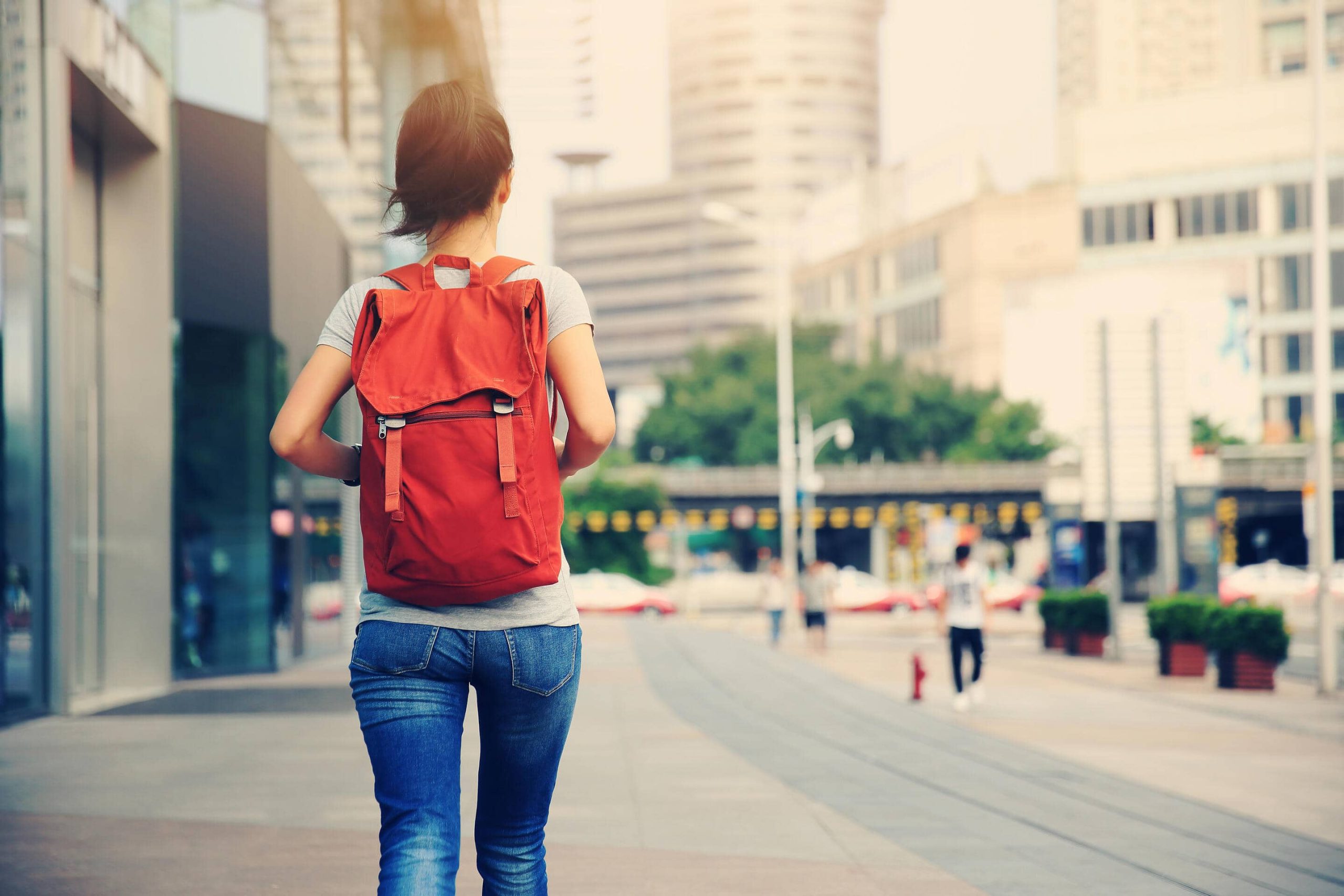
Image Credits: Back 2 Basic by JC Cheng
As you’re cultivating these green habits, another effortless way to offset your carbon emissions is by signing up with Geneco’s Power Eco Add-On – Singapore’s first and only customisable green add on for all your electricity plan.
Simply select between Carbon Credits (CC) or Renewable Energy Certificates (REC) and opt the level of green contribution – 25%/50%/75%/100% – that you’re most comfortable with, and you’re on your way to make a difference to our Earth with as little as $1 more per month!
Who says investing in our planet and our future can’t be affordable?
4. Contributing to Geneco’s Plant-A-Tree Fundraising Initiative
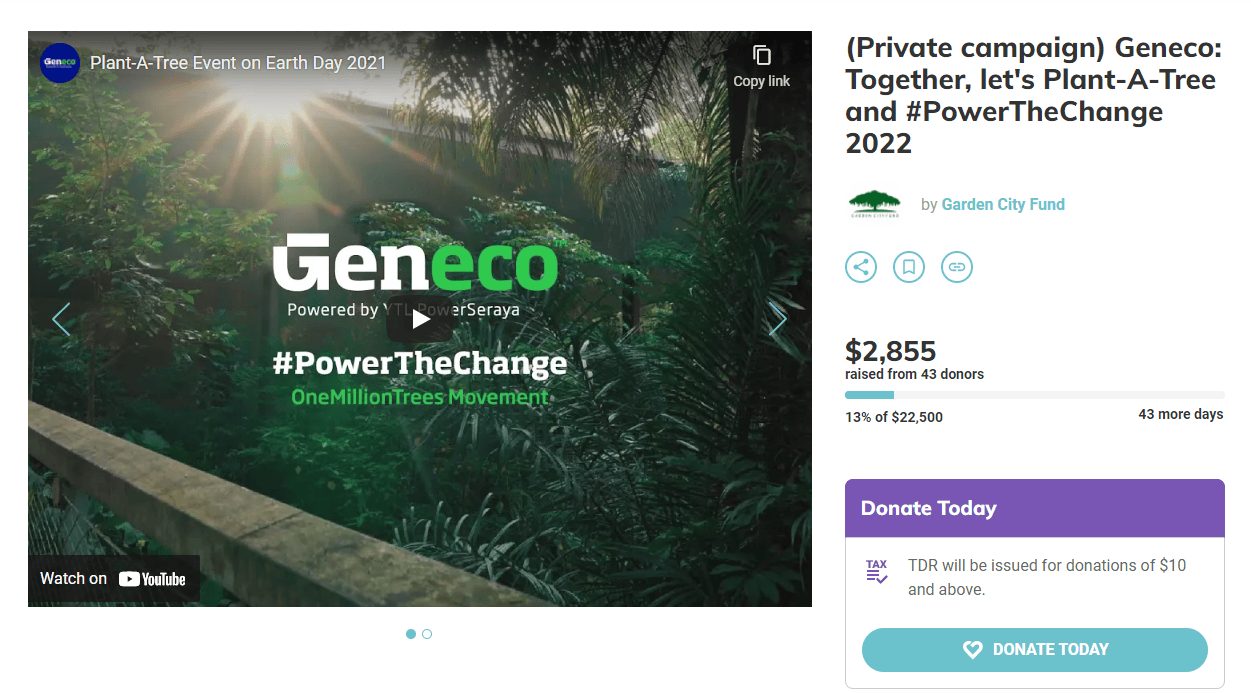
Did you know? A full-grown tree can absorb an estimated of 48,000kg of carbon dioxide per year – that’s equivalent to not having any cars on our local roads for over 133,333 years – imagine that!
Besides helping to tackle global warming, trees also play a key role in beautifying our everyday spaces, provide shade and support our biodiversity. With its multitude of benefits, trees form an important foundation to build a liveable and sustainable Singapore and are truly a gift that keeps giving well into our future generations.
As we invest in our planet this Earth Day, how about choosing to plant more trees as we build our City in Nature? Show your support through Geneco X Garden City Fund via Giving.sg as we contribute towards Singapore’s #OneMillionTrees movement and we will match dollar-for-dollar for each donation.
100% of your donations will go towards restoring the greenery in our very own island. No amount is too little, so do spread the good word with your friends and family!
As we celebrate Earth Day this year, let’s remember to cultivate greener habits and make small lifestyle changes to be kinder to our planet. It’s time for us to give back and heal our mother nature.
Together, let’s continue to #PowerTheChange and create a greener world for all who live in it.
4 Microgreens to grow at home
- Home
- 2022 (
- Page 2 )
[Post Date]
4 Ways to invest in our Planet this Earth Day
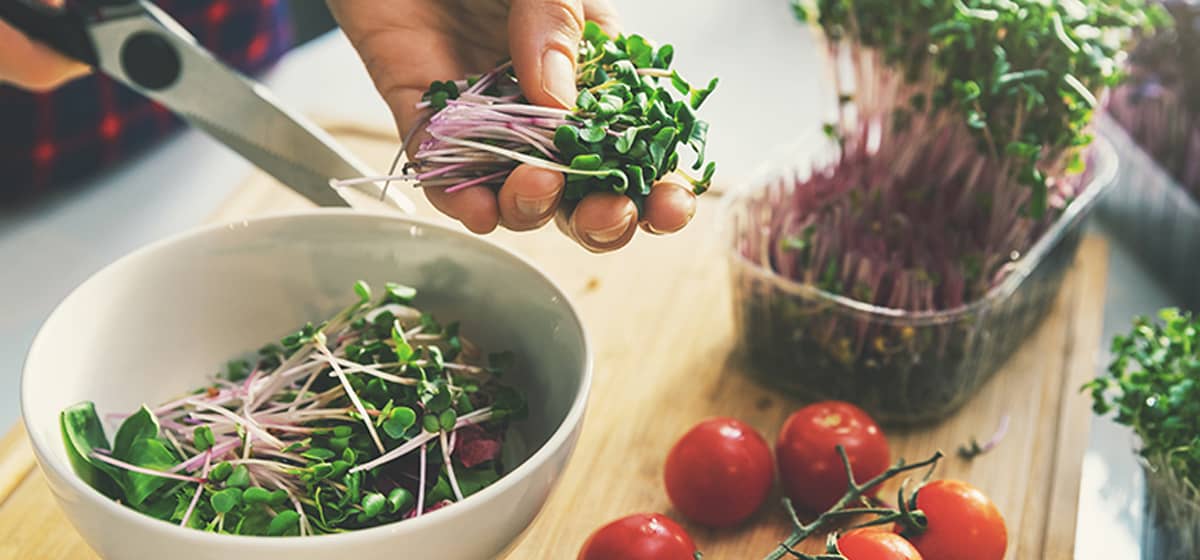
Plants are a great option to have in any home. Not only do they add a pop of greenery, which is proven to help us feel more relaxed, having plants indoor also helps to eliminate any harmful toxins in the air. According to a study by NASA, houseplants can remove up to 87% of air toxins in 24 hours, ensuring that the air we breathe remains constantly clean and refreshing!
However, if you’re looking for a niftier houseplant option for your home that is suitable for HDB-living, growing your own microgreens also serves as a great alternative! In addition to its aesthetic exterior, microgreens are fuss-free and very easy to grow, taking an average of 14 days to harvest. Best of all, these tender greens can be added into any of your meals for that extra veggie boost – a definite advantage over regular houseplants! While miniscule in size, microgreens are packed with a whole range of nutrients and antioxidants, and can play a role in protecting us against chronic diseases.
If you’re a first-time microgreen plant parent and are wondering how you can get started – fret not! In today’s blogpost, we will be sharing four microgreens that are perfect for anyone:
1. Lentils
While it is one of the lesser known and underrated microgreens, lentils are not any less beneficial for our health. In addition to nutrients such as vitamin B, C and E, lentil microgreens are also jam packed with protein, serving as a great meat replacement source. What’s more, its high fibre content helps in boosting metabolism, weight management and may even reduce the risk of developing cancer.
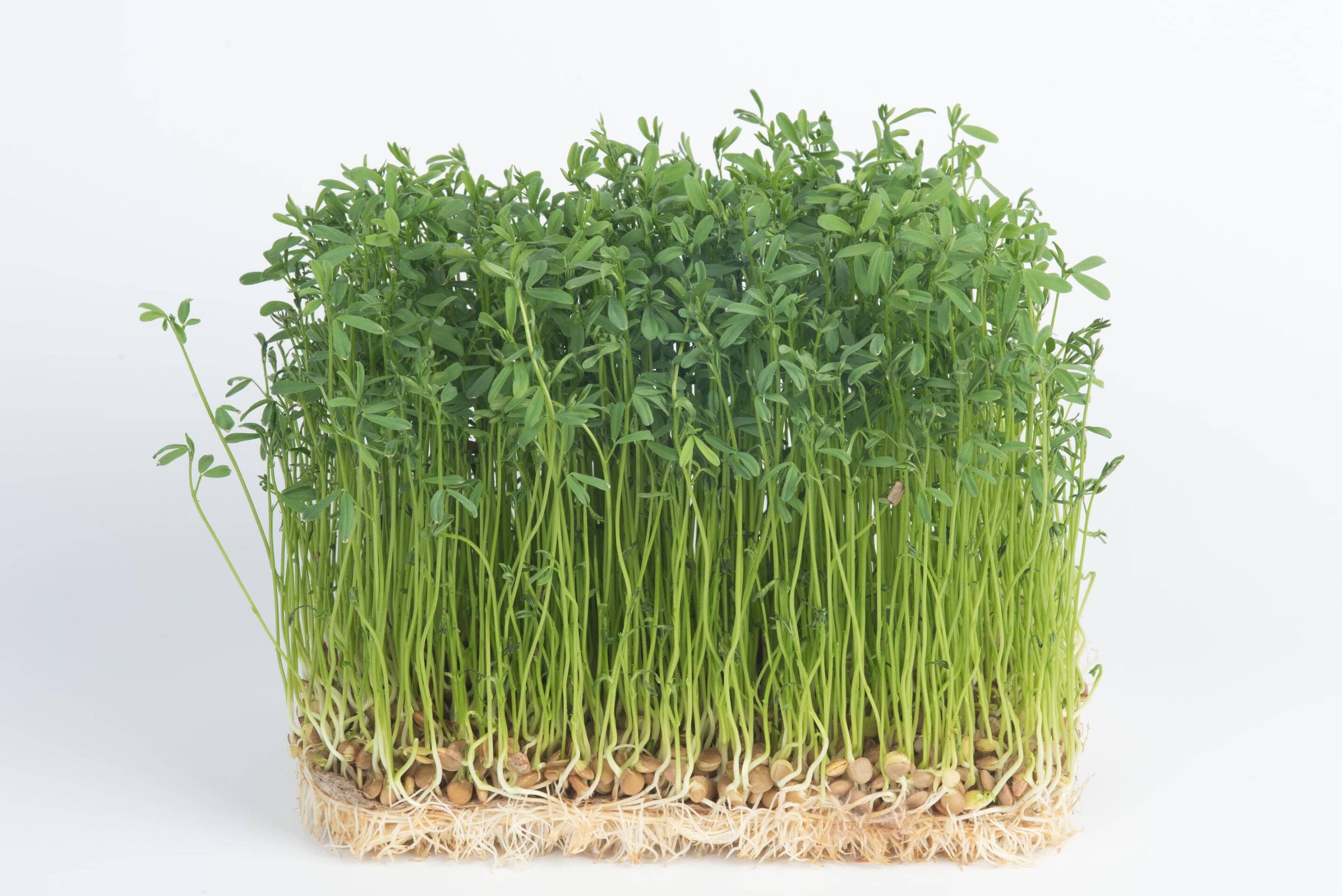
Image Credits: Nylon Coffee Roasters
With its crunchy and refreshing flavour, lentil microgreens are a perfect addition into any of your favourite meals from salads to stir-fry noodles or even blending them up and mixing it into your pesto sauce! If you’re feeling more adventurous, try including these little greens into your smoothies or curries for that kick of nutty flavour and boost of vitamins.
Gardening Tip: A great tip when growing lentil microgreens is to soak your seeds overnight for at least 8 to 12 hours to jumpstart the sprouting process. Once you notice sprouts shooting out of your lentil seeds, they are then ready to be transplanted into your growing medium such as soil. Thereafter, do ensure that your growing medium remains moist but not overly soaked, for the best condition for your microgreens to flourish.
While growing lentil microgreens is a little different from the others and would require an extra soaking step, the entire process remains pretty straightforward and is easy even if you’re a novice gardener, so not to worry!
2. Kale
Kale microgreens are known as one of the most nutrient-dense superfoods with multiple health benefits including vitamins A, C and B6, as well as a myriad of antioxidants. A true example of a food source that punches above its weight, kale microgreens contain 5.2 times and 5.3 times more potassium and zinc respectively as compared to its adult counterpart! With such high levels of minerals, these microgreens are a great way to help regulate our blood pressure, support the growth of healthy muscles and provide a boost to our immune system.
While it holds a subtler bitter flavour as compared to mature kale, kale microgreens are still considered as one of the stronger tasting microgreens. If you’re not a fan of its raw and grainy texture, we’d suggest adding them into a banana smoothie, which will cover the otherwise raw taste of the kale. Similarly, if you’re looking to include this superfood into your salads, adding a drizzle of balsamic vinegar will do the trick in masking its bitterness!
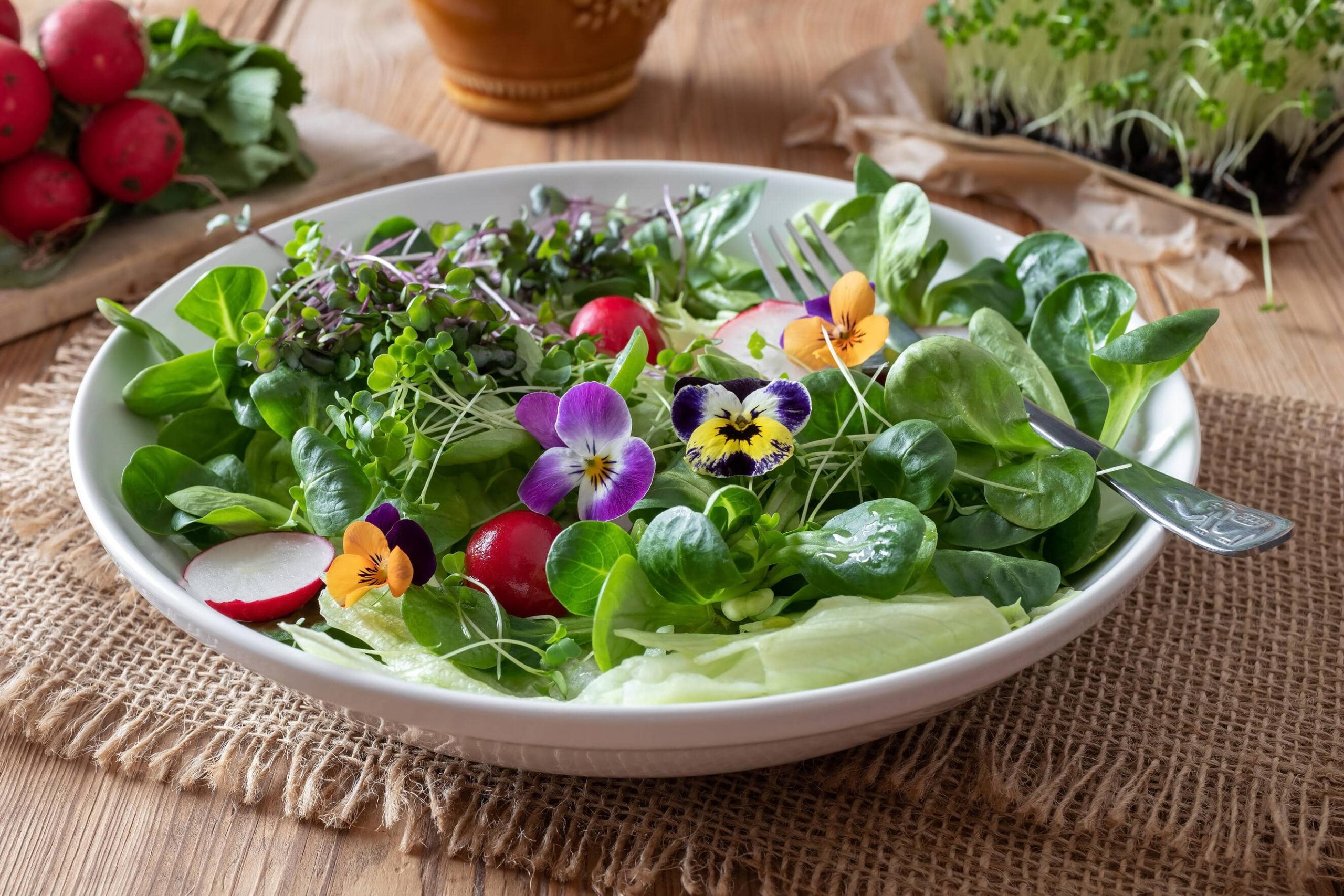
Source: The Sustainability Project
Gardening Tip: Kale microgreens are one of the easiest to grow – taking just 10 days before they’re ready for harvest! But, if you’re looking to further improve the germination process, a great tip would be to mist your seeds prior to spreading them on your soil.
Once they are ready for harvest, do remember to not water them 12 hours prior to harvest as well, as it would be very hard to get the foliage to dry otherwise. Packing your harvested kale microgreens wet is not encouraged as it would decrease its shelf life, which may lead to food wastage.
3. Broccoli
While a mature broccoli is sturdy and rather hard when its uncooked, a microgreen broccoli is the complete opposite! With its tiny leafy green tops, these delicate young seedlings of the broccoli plant are incredibly nutritious and contain double the amount of calcium per gram compared to regular broccoli. Broccoli microgreens are also high in sulforaphane, which is one of the critical micronutrients that helps fight cancer, reduce inflammation in our respiratory pathways and even heal any damage to our eyes’ retinal cells – ensuring that our eyesight remains sharp and bright!
With a tangy and mild peppery aroma, broccoli microgreens can be easily added to any of your favourite dishes like sandwiches or soups. To maximise its nutritional value, try consuming these microgreens raw, which studies have shown to provide three times more nutrients.
Or, if you’d prefer not too raw a taste, simply dunk them in your hot soup, which would still yield you at least 80% of its nutrient value. These miniature crunchy add-ons are also great for sneaking into your child’s meals for that extra nutrition boost and protect them against any viruses or free radicals.
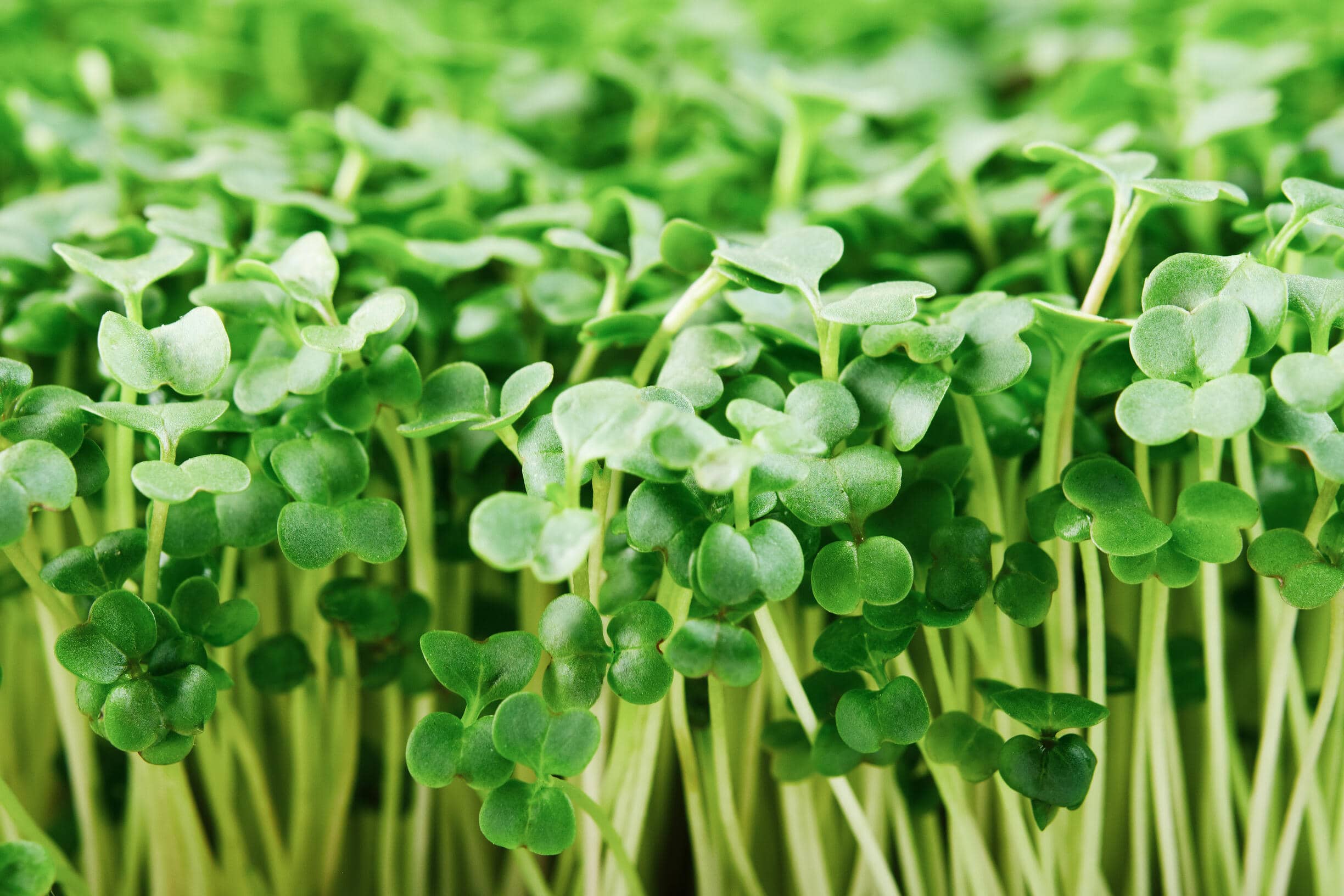
Image Credits: Back 2 Basic by JC Cheng
Gardening Tip: Broccoli microgreens are one of the more popular options given that they’re the simplest to grow – taking just 6 days before they’re ready for harvest! These microgreens require tons of light so we’d encourage you to leave your planting tray by the windowsill or invest in some grow lights. Keep your microgreens moist but not overly watered, and you will be ready to harvest them in no time!
4. Cauliflower
With its glossy dark green leaves and violet stem undertones, cauliflower microgreens are one of the most aesthetically pleasing bunch of the lot out there. Part of the Brassicaceae family, which also counts bok choy, brussels sprouts and cabbage within its family tree, broccoli microgreens pack a punch on the nutritional front with a high concentration of vitamins C, B6, iron, magnesium and fibre. This helps in reducing our risk of liver cancer and diabetes, heart disease and even improving our moods!
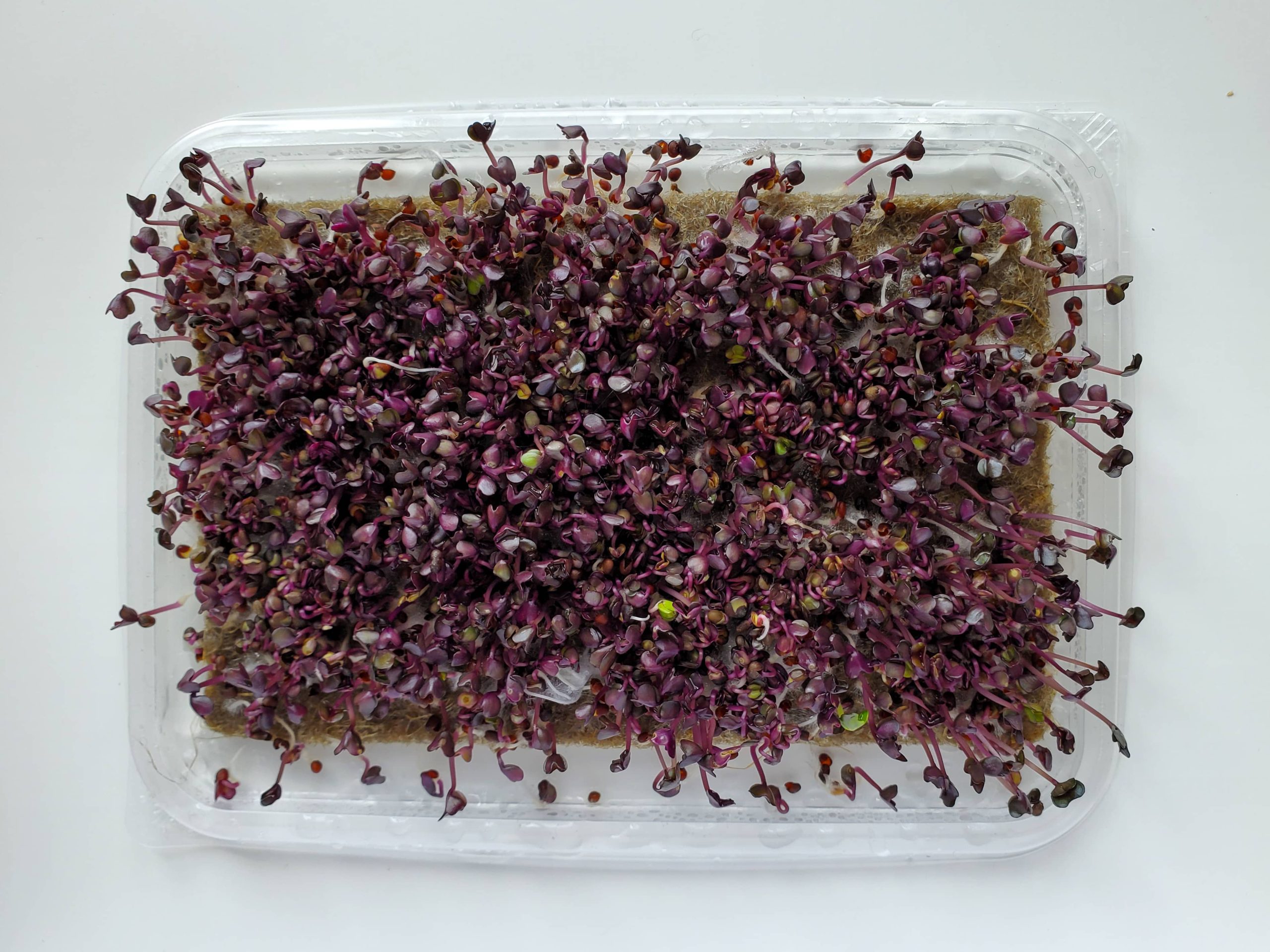
Similar to broccoli microgreens, these cauliflower babies also have a mild peppery flavour accompanied with a crisp texture. Simply throw them into any of your soups or as a topping for your sandwiches and burgers for that extra nutritional crunch. If you’re up for it, you can even consume it as a snack, dipping them in hummus!
Gardening Tip: There are two stages to growing cauliflower microgreens. First, for germination, place them in the dark for around five days. Thereafter, once the seeds have germinated, expose your microgreens to indirect light for another four days – this will help in flourishing the microgreens as they turn from yellow to beautiful green leaves. Ensure that you only water them twice a day – every morning and evening – and you will be able to harvest them within less than two weeks!
Ready to start growing your own little garden at home? Check out the various local brands such as EverythingGreen.sg and Urban Harvest that offer a myriad of options. If you’d like to pick up some quick tips on how best to take care of your microgreen babies, do head over to our ChangeMaker Cultivate Central where they offer some of the best tips to ensure that your microgreens will be ready for harvest in no time!
And, if you would like to extend your green thumb beyond your homes, you can also contribute by making a donation to Geneco’s X NParks’ Garden City Fund at Giving.sg.
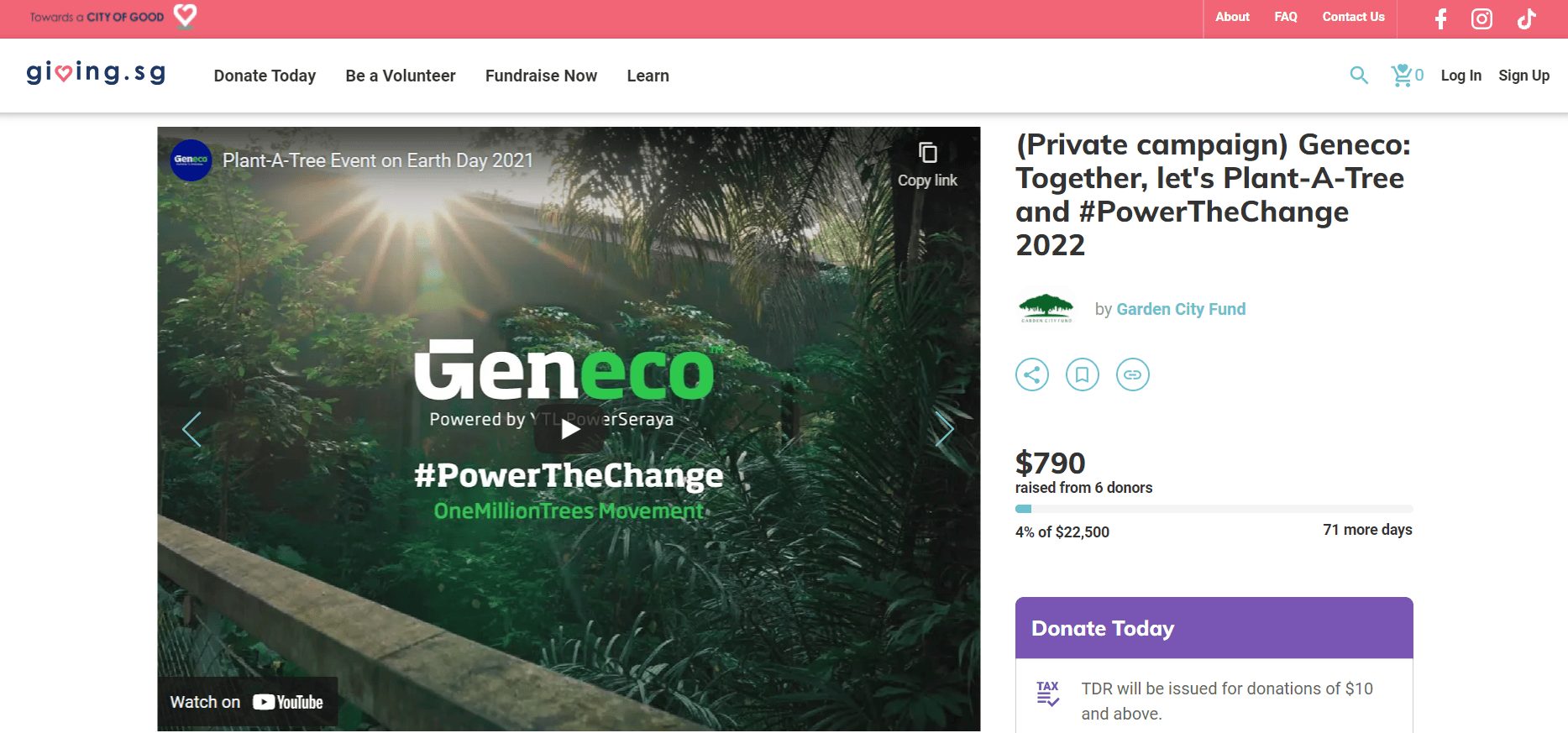
Join us as we partake in NParks’ #OneMillionTrees movement to #PowerTheChange as we look towards planting an additional 150 trees in marking our 4th Anniversary and milestone of powering over 150,000 homes this year!
We will be matching dollar-for-dollar with 100% of the money raised to go towards this movement.
Together, let’s continue to #PowerTheChange and create a greener world for all who live in it.
4 Things to look out for at Singapore’s new Round Island Route
- Home
- 2022 (
- Page 2 )
[Post Date]
4 Things to look out for at Singapore’s new Round Island Route
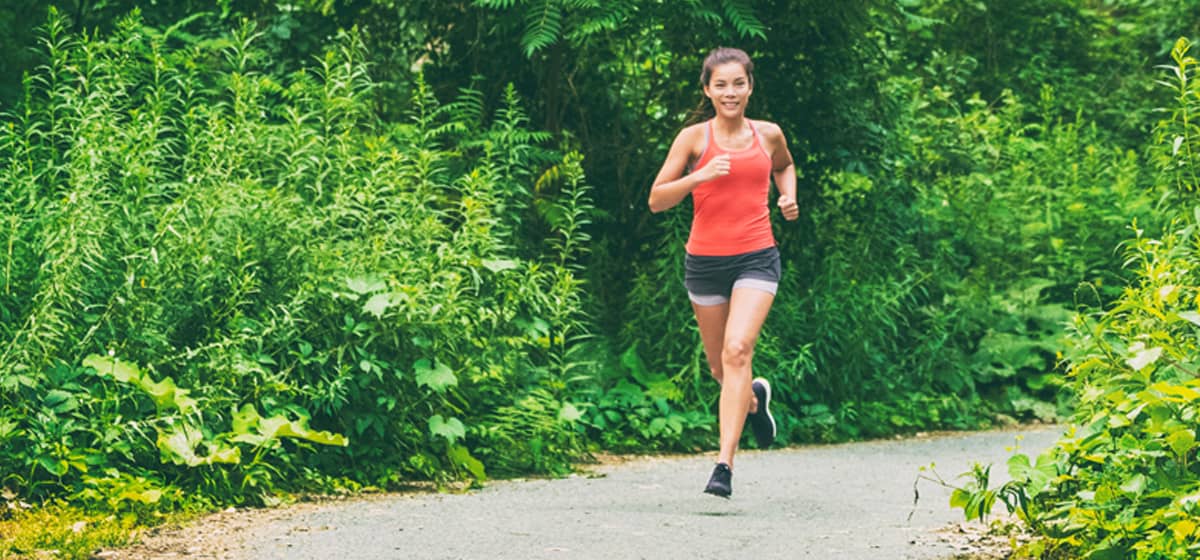
Trees are a great asset to any city and its inhabitants. Besides improving our urban environment by providing shade and reducing ambient temperatures, they also improve both our air and water quality by absorbing pollutants. What’s more, trees are also proven to be good for our mental health! According to the American Psychological Association, individuals who spend time in nature are more likely to enjoy better moods, reduced stress and improved cognition. With our sunny weather all year round, spending time outdoors can also bring you plenty of Vitamin D – an extra boost to your immunity!
Being in Singapore, we’re fortunate to have numerous green spaces that we can immerse ourselves in from popular spots such as East Coast Park to hidden areas such as Kranji Marshes and Tampines Eco Green. With Singapore’s OneMillionTrees movement as part of our City in Nature vision, we may expect even more nature spots to come!
One exciting nature spot recently unveiled is the first phase of the new Round Island Route (RIR). Stretching across 75km, the route covers the eastern half of Singapore, making it the longest recreational connection that encircles the island’s eastern side. When completed, the RIR would form a continuous 150km park connector outlining our little red dot, offering more nature-based recreation for Singaporeans to enjoy.
If you’re wondering how you can get to the RIR, well it’s easy! Given its expansive area, the RIR is conveniently connected to multiple parks including Pasir Ris Park, Changi Beach Park, Sengkang Riverside and the oh-so-famous East Coast Park just to name a few. This means that you can easily enter the RIR through multiple entry and exit points, serving as an extension to our existing nature parks. Just look out for the RIR signposts in these parks to start your journey!
Ready to grab your bikes or hiking shoes and start exploring the latest nature spot that Singapore has to offer? Here are some highlights that cannot be missed!
1. Changi Bay Park Connector
If you’re one for picturesque beach views, you have to check out Changi Bay Park Connector. Located at the eastern corridor of the RIR, the park connector offers a scenic coastal route for cyclists and hikers travelling from East Coast to Changi Beach Park.
Fun fact: With its lush greenery and seaside views, it is known as the “Jeju Island” of Singapore!
For an extra treat, head over to the two cycling bridges at Changi Bay Point that overlook the waterfront.
Psst, if you’re a morning person, do visit the bridges at dawn to catch the beautiful sunrise!
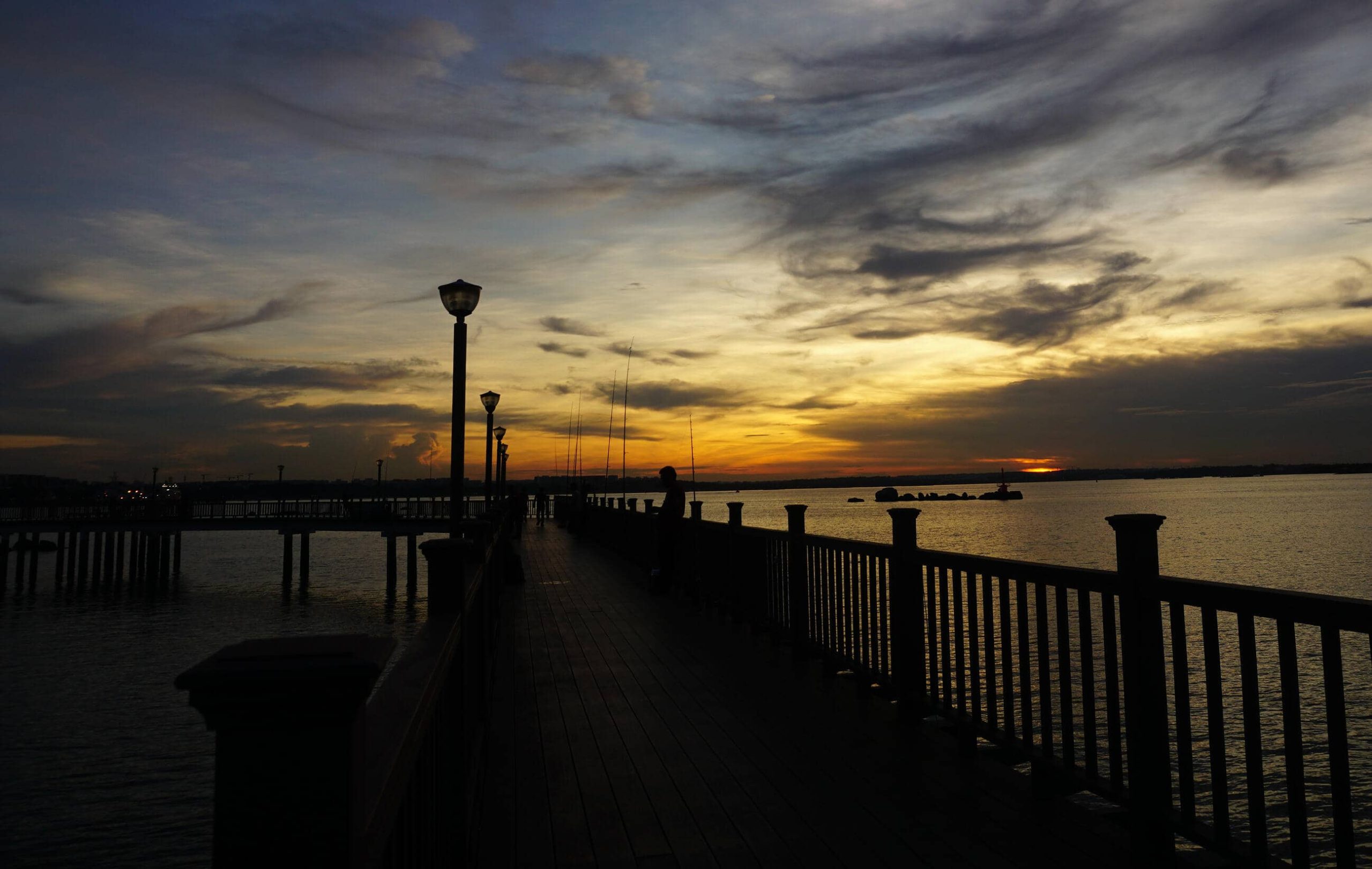
Image Credits: Nylon Coffee Roasters
Each of these bridges are constructed with glass fibre reinforced concrete finishing for its decking, which emulates natural timber to blend into the area’s rustic character. To ensure the safety of cyclists, both bridges are also layered with a slip resistant material so you can be sure of minimal slip accidents even if you’re riding after a downpour. That said however, do still take care to not speed along the bridges. With the beautiful views, we’d encourage you to slow down, take a moment for yourself and embrace the best that nature has to offer.
If you are feeling tired after exploring the various nooks and crannies of the park connector, take a break and soak in the tranquil scenery at the lookout pavilion at Changi Bay Point. In addition to being perfect rest stops for you to chill before continuing the rest of the RIR, these pavilions are also insta-worthy, so don’t forget to take some pictures while you’re taking that water break!
2. Sengkang Riverside Bridge
Further up to the north-eastern region of the RIR lies the largest bridge in Singapore that runs across a canal – the Sengkang Riverside Bridge. The bridge is designed as a shared place for everyone – from cycling to running and even for residents to get from one side of the Sungei Punggol bank to the other!
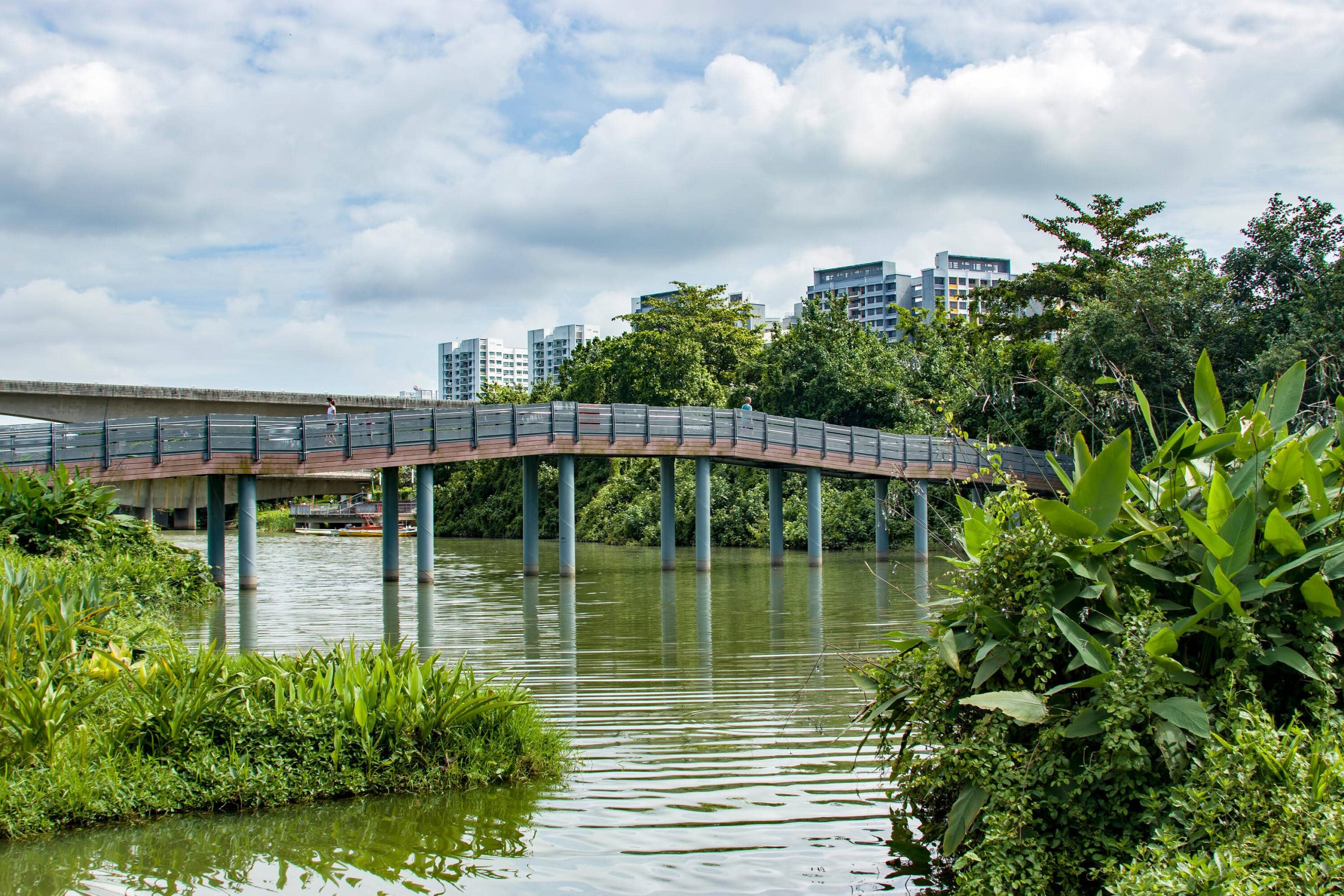
Source: The Sustainability Project
While you’re enjoying a long leisurely stroll on the bridge and taking in the sights and sounds of nature, why not also take a short detour by visiting Sengkang Riverside Park?
Home to Singapore’s largest man-made wetland, this is your chance to get up close and personal with the many native aquatic plants and wildlife. If you’re lucky, you may even be able to catch sightings of mangrove birds such as the Purple Heron or Collared Kingfisher!
3. Wildlife Spotting
And while you’re taking in the greenery around you, don’t forget to also keep an eye out for the many animals that may be out and about!
One of the most majestic among the bunch will definitely be the White-Bellied Sea Eagle – the largest resident raptor in Singapore, with some adults attaining a wingspan of over 2 metres! Easily identifiable by its white underparts with black flight feathers, these eagles feed primarily on fish and are therefore, a common resident along coastal regions.
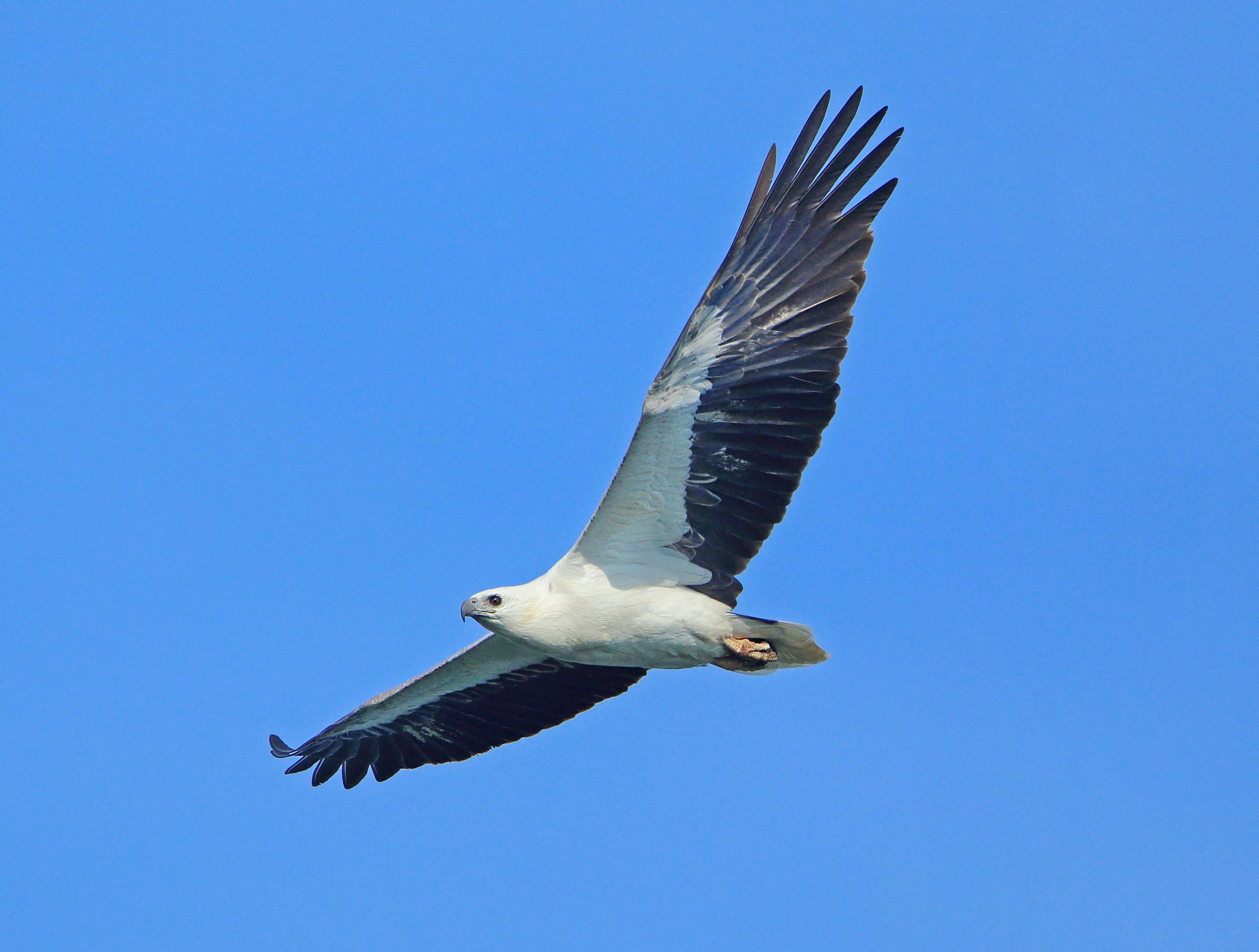
Fun fact: Female while-bellied sea eagles actually grow to be slightly bigger in size as compared to their male counterparts!
If you have not had the chance to spot our favourite family of otters around our island, well this is your chance! At the RIR, our smooth-coated otters can also be found frolicking in pairs or small families, and enjoying their day near the mudflats, mangroves, or other coastal areas such as the Sengkang Riverside Park and Changi Bay Point.
While listed as critically endangered in Singapore, the population of these native creatures have no doubt been growing over the years with an estimated of 90 otters in Singapore today. This is a far cry from merely 50 years ago when our local rivers were choked with garbage and sewage, forcing these otters to disappear from the area and in danger of being extinct.
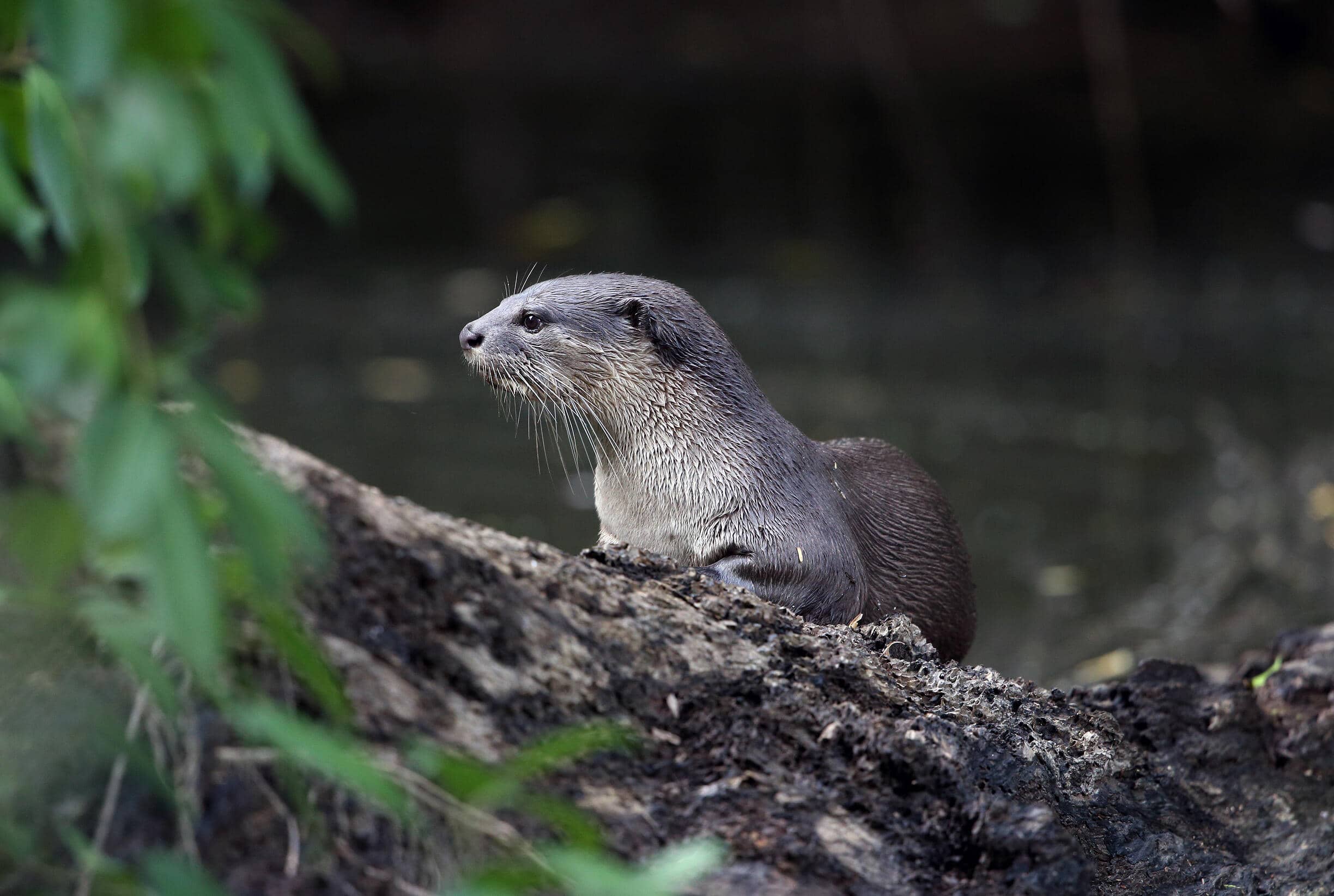
Fun fact: did you know that these otters can stay underwater for up to eight minutes in a single breath? This allows it to hunt successfully for its food, which includes fish, frogs, crabs and turtles
4. Local Native Plant Species
As part of Singapore’s City in Nature vision, approximately 5,100 trees and shrubs have also been planted along the first half of the RIR stretch. These includes native coastal and riverine tree species such as the Penaga Laut, which is classified as critically endangered in Singapore. Growing up to heights of 35 metres tall, this tree is characterised by its glossy oval-shaped leaves and white clustered flowers so do keep a look out for these fragrant flowers when they’re in full bloom!
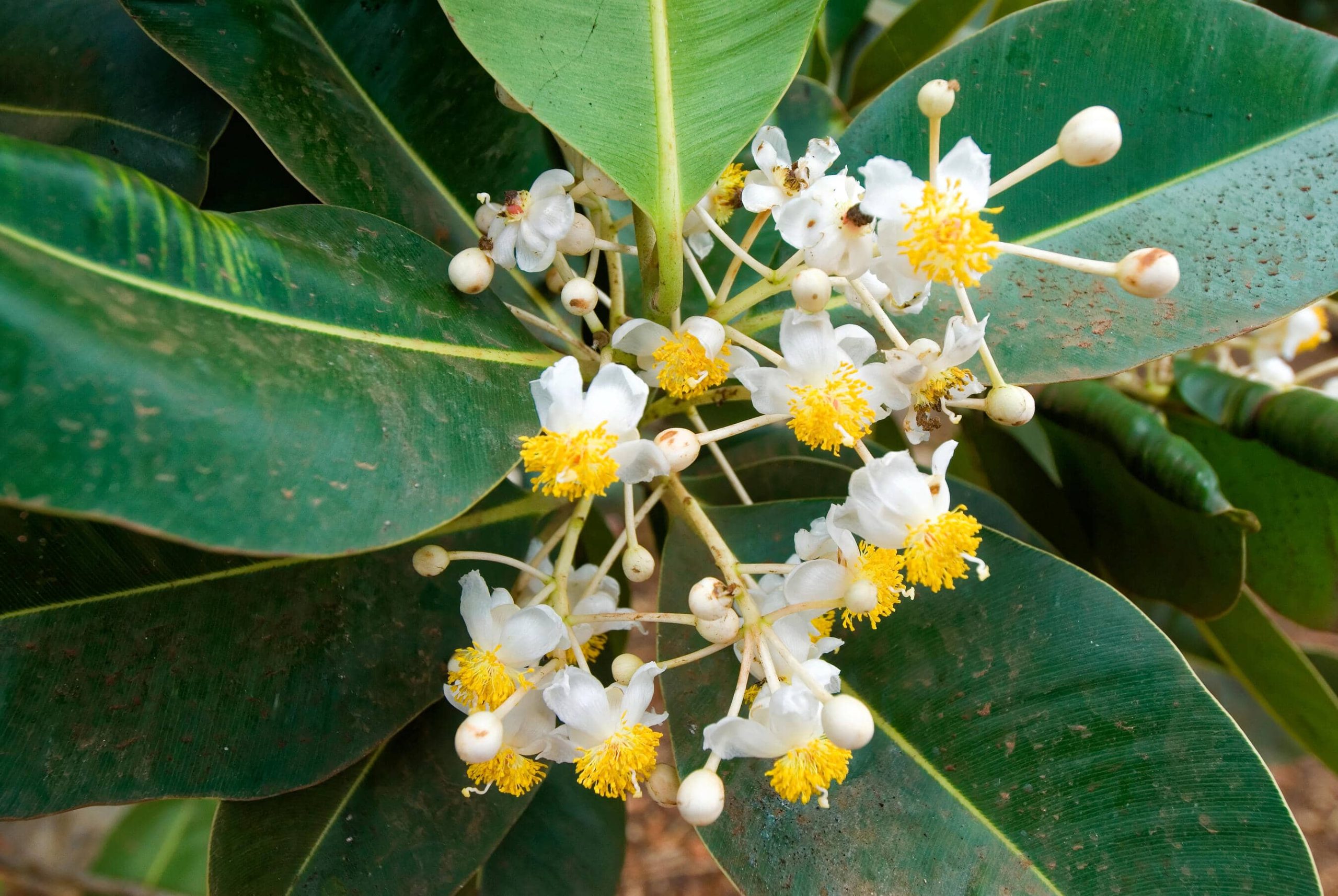
Fun fact: the Penaga Laut can live to more than 100 years old! It is also a tree of many uses – traditionally, the oil from its seeds is being used to heal a range of skin ailments while its roots and leaves also have various medicinal purposes.
Another native tree to keep an eye out for is the Small-Leaved Nutmeg – another critically endangered plant species in Singapore. Highly adaptable to various habitats, the Small-Leaved Nutmeg thrives in our sunny weather and can be found in coastal areas, lowland primary and degraded forests.
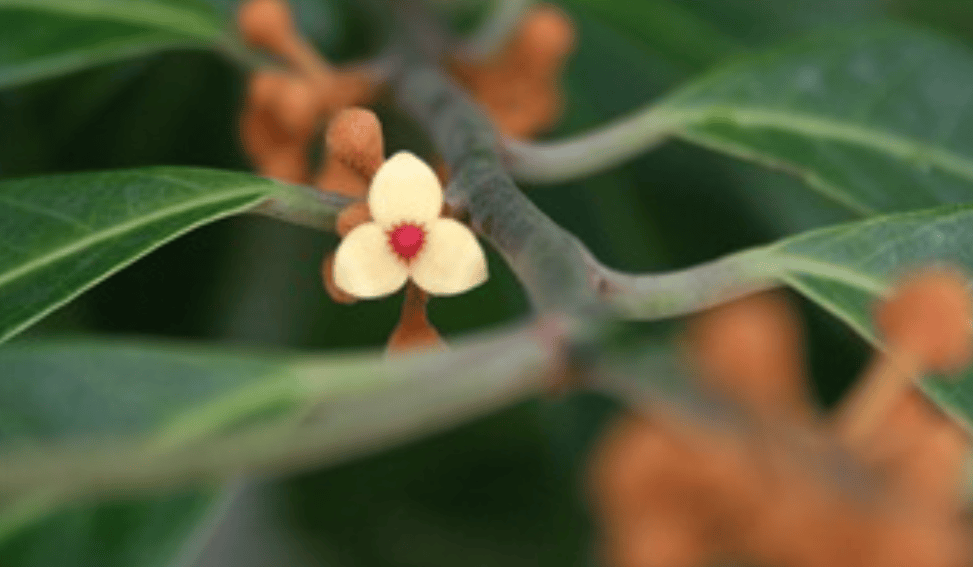
Photo Credit: NParks
Fun fact: the Small-Leaved Nutmeg is dioecious, which means that each tree can only produce either male or female flowers only.
If you’re wondering if you can identify the “gender” of the trees’ flowers – yes, you can! Simply look out for its flowering shoots (inflorescence). For male inflorescence, it generally has five to 20 flowers while female inflorescence has only up to 10 flowers.
Beyond providing a whole range of environmental, social and economical benefits, trees also form an important foundation to build a liveable and sustainable city while also playing a key role in combatting climate change. It is imperative to conserve them not just for our generation, but also future generations to come.
To contribute to the myriad of tree species in Singapore, Geneco hopes to plant an addition 150 trees as we mark our 4th Anniversary and milestone of powering over 150,000 homes this year!
We hope you can be a part of this movement to #PowerTheChange and join us in transforming Singapore into City In Nature by making a donation through the Geneco X NParks’s Garden City Fund at Giving.sg. We will be matching dollar-for-dollar with 100% of the proceeds going towards this initiative.
Do grab your friends and family and spread the good word as well!
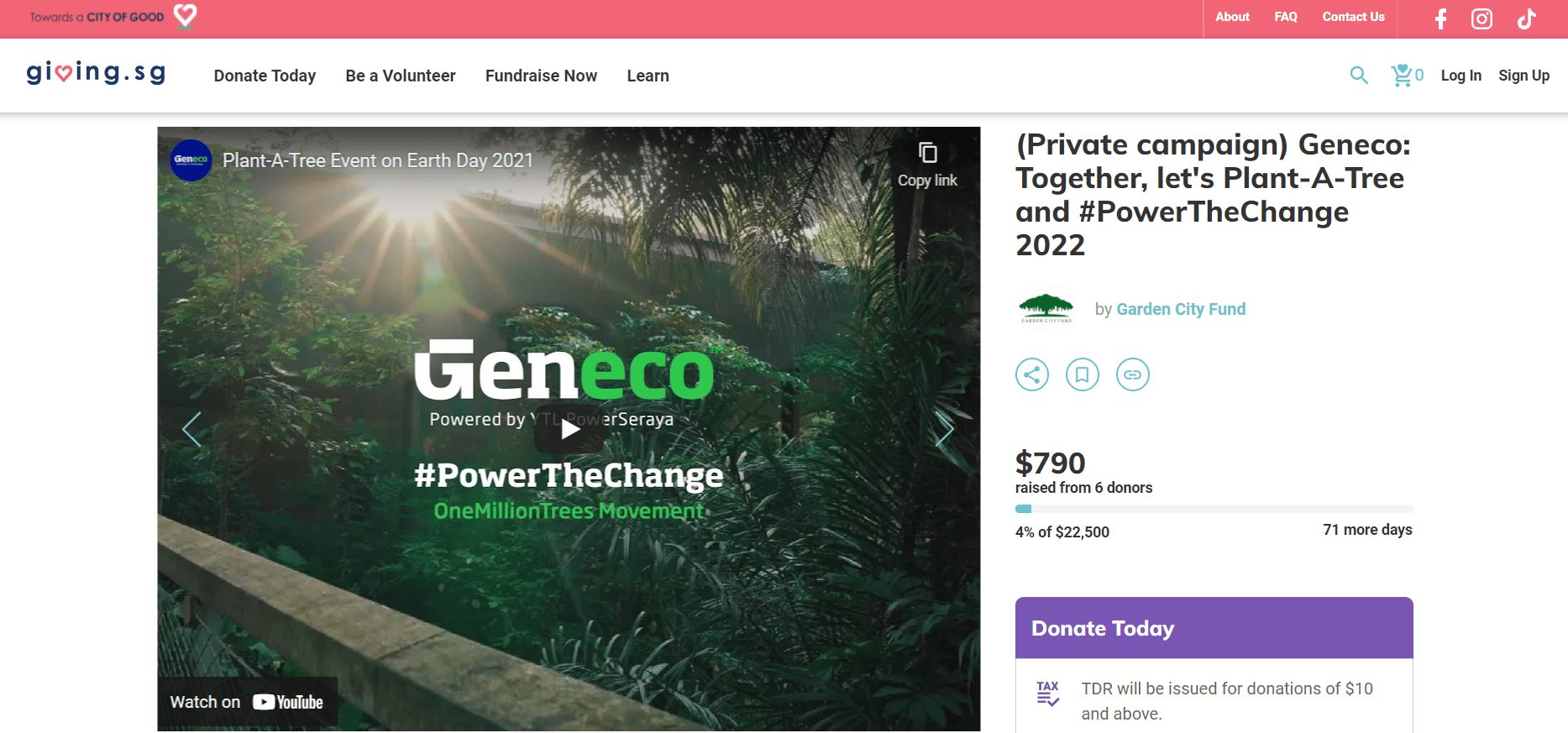
We hope that these features have piqued your interest in discovering our new Round Island Route! As we enjoy the latest nature spot that Singapore has to offer, let’s all do our part in protecting our natural environment as well, so do remember the rule of leaving nothing but footsteps!
Together, let’s continue to #PowerTheChange and create a greener world for all who live in it.
Reduce your carbon footprint with these 4 simple green tips
- Home
- 2022 (
- Page 2 )
[Post Date]
Reduce your carbon footprint with these 4 simple green tips
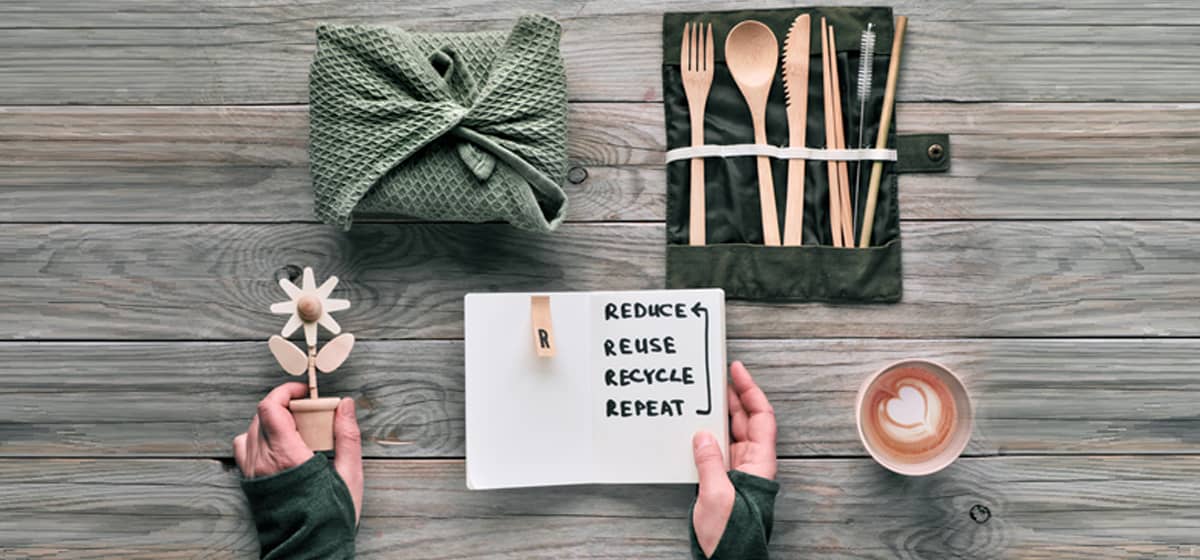
In the blink of an eye, we’re a quarter of our way through the year. As we celebrate the month of sustainability with Global Recycling Day, International Forest Day and Earth Hour coming up this March, let us take this opportunity to learn the importance of reducing our carbon footprint, and how it contributes to our fight against global warming.
In a recent report by the Intergovernmental Panel on Climate Change (IPCC), the panel is calling for more urgent action to mitigate climate change through the reduction of carbon emissions. The message is clear – if carbon emissions are not sufficiently reduced, it would spell catastrophic consequences for the world.
While climate change is a global issue that cannot be undertaken by one party alone, for us as consumers, we can contribute through the everyday lifestyle choices that we make. It is through a collective of such conscious green efforts today that we eventually build a greener future tomorrow.
Here are four simple ways which you can get on onboard with easily to reduce your carbon footprint:
1. Reduce, Reuse, Recycle.
We’re sure that everyone would’ve heard of the 3Rs – Reduce, Reuse and Recycle – growing up. But, have we ever thought about how it actually helps our planet? According to a CNA commentary, an average individual in Singapore produced a staggering 334kg of waste in 2019, most of which was sent to our local landfill for incineration. Consequently, an estimated total of 1.58 million tonnes of carbon emissions is released annually from our landfills alone.
By choosing to practice the 3Rs, this will help reduce the amount of trash we produce and the great news is it can be incorporated into every area of our lives easily! Here are some examples of how you may do so and the amount of carbon emissions you’d be saving with each:
- Reduce unnecessary grocery purchases
Have an expired box of chocolates trapped at the back of your fully-stuffed fridge? How about that bunch of bananas which you’ve completely forgotten about and is now giving off a bad smell? If these examples sound familiar – it may be a sign that you are purchasing more groceries that is needed for your household.
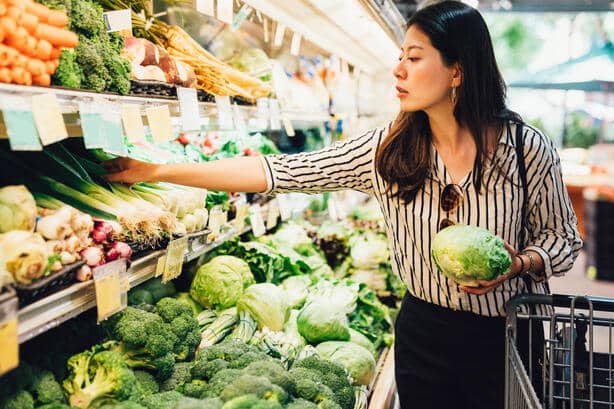
- While one may think that it may just be a piece of chicken here and a litre of expired milk there, did you know that an average 6.9kg and 2kg of carbon emissions is released with every kilogram of chicken and milk respectively?Not only are we wasting the resources that were used to grow and deliver the food to our tables when we throw them away, we’re also increasing the resources needed to dispose of it; both of which adds up to our carbon footprint!To prevent this unnecessary waste, make a list of all the items you need before heading to the supermarket and stick to it to avoid purchasing any items that may not be required.
- Reuse by choosing preloved
The United Nations Environment Programme estimates that producing a pair of jeans releases 33.4kg of carbon emissions. If that is the environmental cost for just a single pair of jeans, imagine the amount of emissions that was produced with our entire wardrobe! With such high figures, it is unsurprising that the fashion industry is one of the most polluting in the world, more than the airline and shipping industries combined.

- To tackle this and drive a change, we’d encourage you to consider shopping preloved clothes instead. With the many thrift stores that are popping up across Singapore, there are endless choices offered for every fashion style possible such as Swapaholic, PreLouLou, or our ChangeMaker Refash, who have processed over 4,530,000 pieces of clothes and helped displace more than 31.6 million kg of CO2 equivalent since 2015 with their sustainability efforts!
- Recycle your recyclables
In an article by Stanford Magazine, it is estimated that recycling plastics alone could save up to 170 million tons of carbon emissions each year as it saves at least 30% of carbon emissions as compared to making brand-new plastics. This is equivalent to removing all vehicles from our local roads for 26 years – a major reduction from a simple lifestyle change!
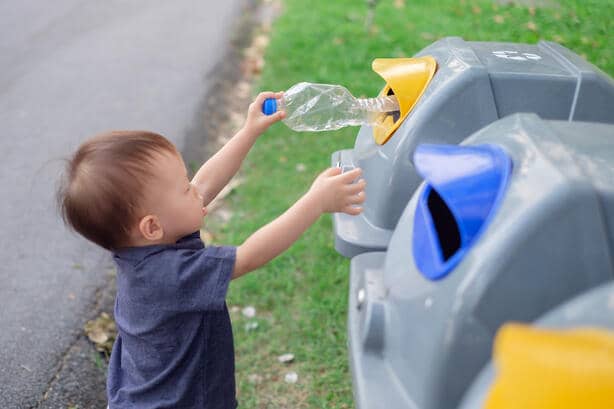
2. Choose alternative modes of transport
Did you know that there are nearly a million vehicles on the roads of Singapore today with the majority of our cars running on petrol or diesel? Collectively, these vehicles release an approximate 6.4 million tonnes of carbon dioxide emissions each year!
While the government has put in place several schemes and initiatives for cleaner energy vehicles by 2030 under the SG Green Plan to reduce carbon emissions on the roads, we can all do our part today as an individual by considering alternative modes of transport.
For instance, if you’re heading to somewhere relatively near, choose to walk or cycle instead. According to Bloomberg, switching from car to cycling just once a day can help reduce our carbon footprint by up to 67%!
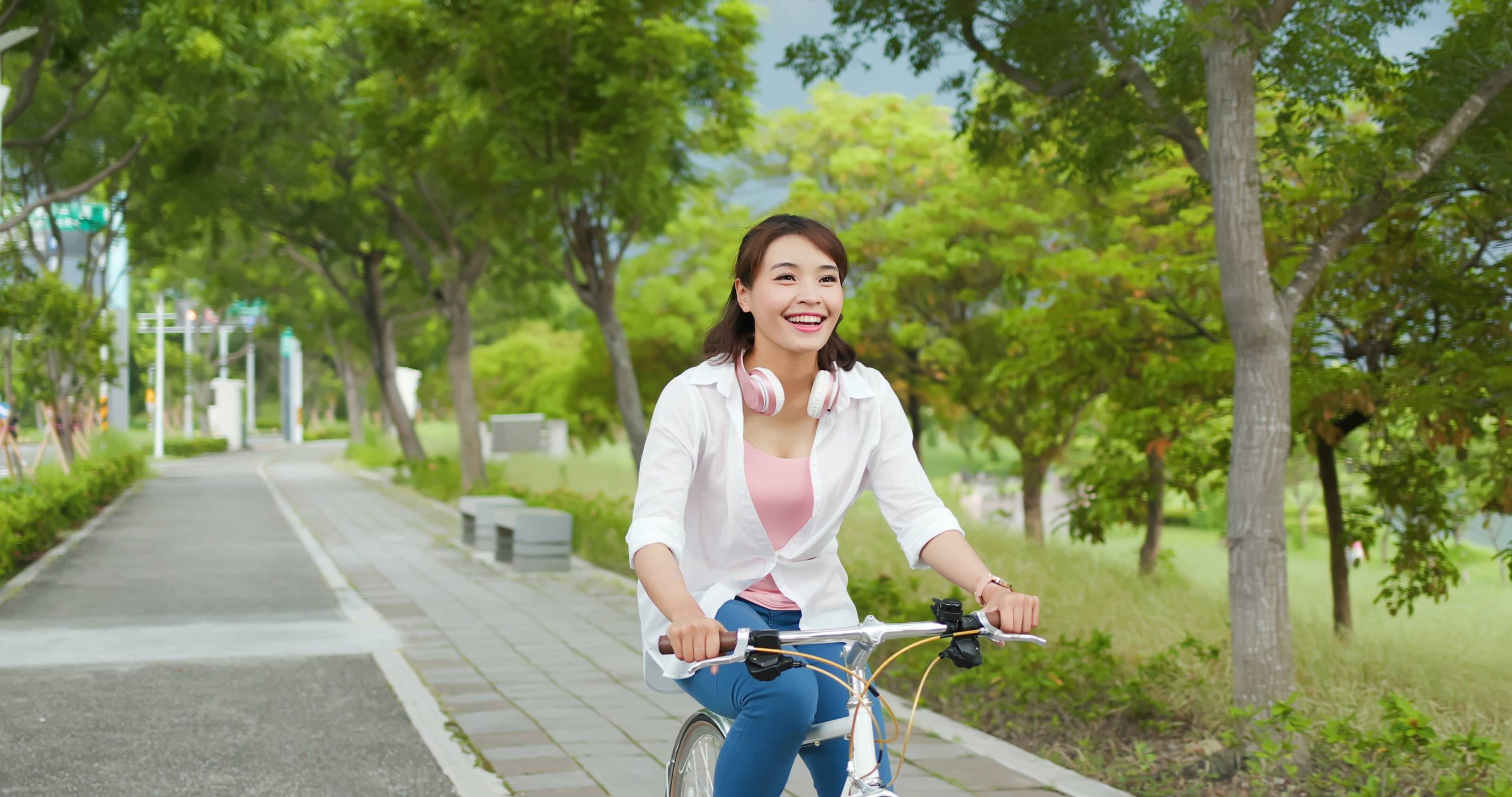
If you’re one who enjoys driving, why not rent with BlueSG, Singapore’s first electric carsharing service! With over 1,000 electric cars across 380 locations, it’s oh-so-convenient for anyone who is looking to have an eco-friendlier day. If you’re a Geneco customer, do also check out the Geneco PowerUp Rewards where you can enjoy a free membership with BlueSG for the first two months!
Taking the public transport is also a great way to reduce our carbon footprint given that an average car uses 9 and 12 times more energy as compared to a bus and train respectively.
3. Plant more trees
Did you know? A mature tree can absorb an estimate of 48,000kg of carbon dioxide per year, helping to reduce the amount of planet-warming emissions from our atmosphere. New research has also shown that with the current worldwide planting programmes, they could potentially remove almost a third of all emissions produced from human activities.
In addition, trees also add to the lush greenery of our Garden City, creating a more sustainable living environment for everyone. As part of our commitment to SG Green Plan 2030, Geneco has joined NParks’ OneMillionTrees movement to build our City in Nature and pledged to plant 250 trees over five years by having our first 50 trees planted at Windsor Nature Park back in April last year on Earth Day.
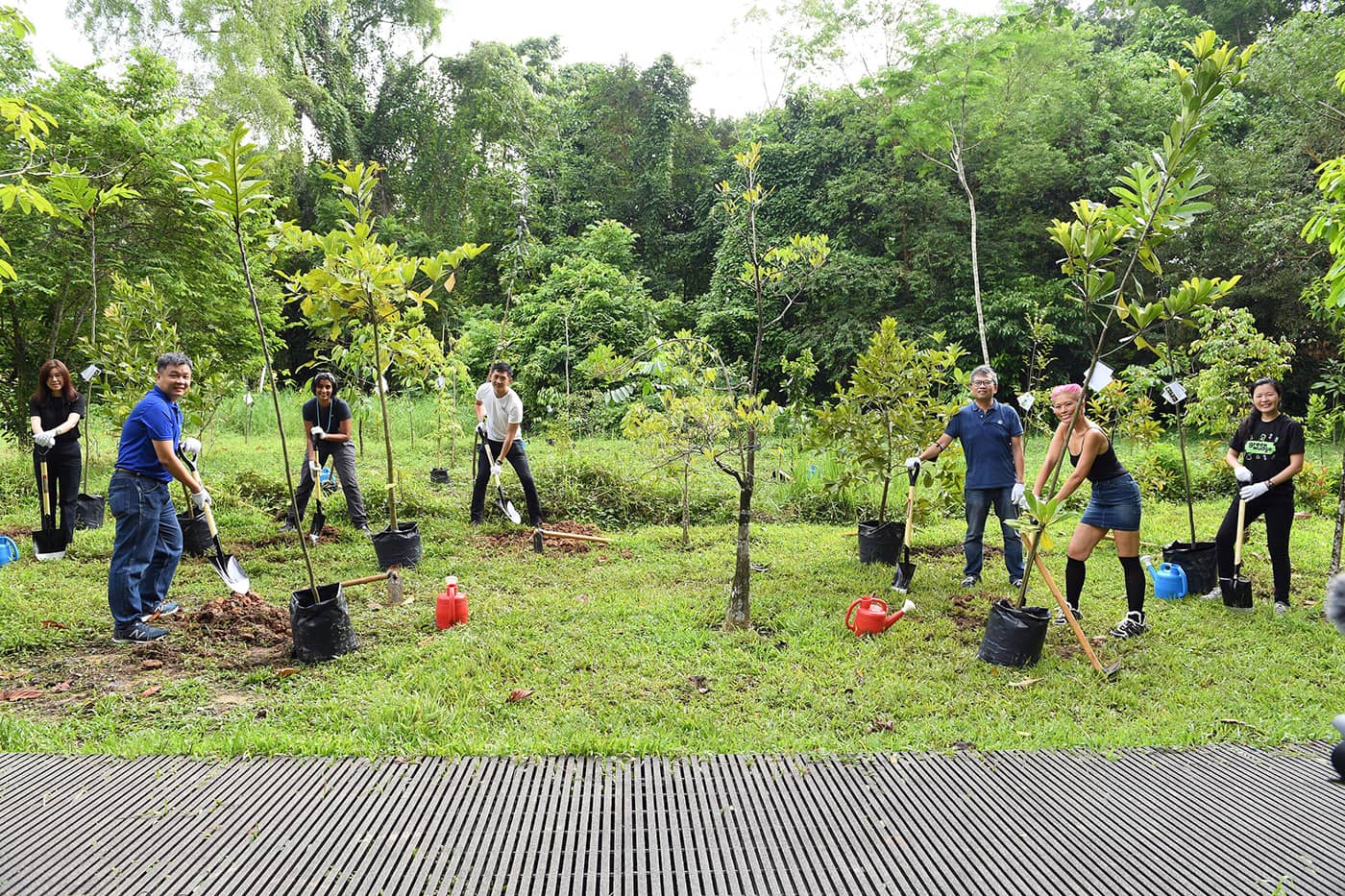
This year, in celebration of our 4th Anniversary and the milestone of having over 150,000 homes choosing us as their preferred electricity retailer, we want to plant an additional 150 trees to continue powering the change for a greener nation!
If you would like to join us in greening our city and reduce your carbon footprint, head over to our Giving.sg Fundraising Drive where you can donate to help us reach our 150 trees goal. We will be matching dollar-for-dollar and 100% of the donations raised will go towards this movement.
4. Engaging in activities without electronic devices
Amid the Covid-19 pandemic, most of us may have gravitated to the comforts of online entertainment such as Netflix, gaming or even just scrolling through our social media platforms. However, did you know that these online activities contribute to carbon emissions as well?
According to the Carbon Trust, every hour of streaming a video releases carbon emissions that’s almost equivalent to driving 300 metres in a car. With billions of hours of video watched by individuals around the world, this no doubt adds up. As reported by The Guardian, YouTube produces more than 11 million tonnes of carbon emissions a year – equivalent to the amount produced by a city the size of Glasgow or Frankfurt, which would be about a third the size of Singapore. For Netflix, the popular streaming platform clocks an average of six billion hours of streaming globally each month – that works out to 330,000 tonnes of carbon emissions, similar to the amount produced if we were to fly from Singapore to San Francisco more than 60,000 times!
Hence, to reduce your electronic footprint, how about setting your electronic devices aside and indulge in a good book, head out for a picnic, or go outdoors for a run instead? These activities are all eco-friendlier and goes a long way in helping us reduce our carbon footprint!

If you’re wondering whether you can still continue enjoying your online entertainment while being sustainable at the same time – the answer is yes! By signing up with Geneco’s Power Eco Add-on, Singapore’s first-and-only customisable green add-on for an electricity plan, you can choose to offset the carbon emissions produced by the amount of electricity you consume.
Simply select between Carbon Credits (CC) and Renewable Energy Certificates (REC) and choose the level of green contribution – 25%/50%/75%/100% – which you are comfortable with! At an affordable rate of just $1 more per month, you can offset up to 3,920kg of carbon dioxide emissions. That’s equivalent to 192 rain trees absorbing CO2 in a year!
By making simple changes in our daily lives through the various activities above, we can all make a big difference in reducing our carbon footprint. Remember, each action counts and there is none that is too small.
Together, let’s continue to #PowerTheChange and create a greener world for all who live in it.
Image Credits: Nylon Coffee Roasters
Source: The Sustainability Project
Power up your recycling efforts with these 4 amazing local organisations
- Home
- 2022 (
- Page 2 )
[Post Date]
Power up your recycling efforts with these 4 amazing local organisations
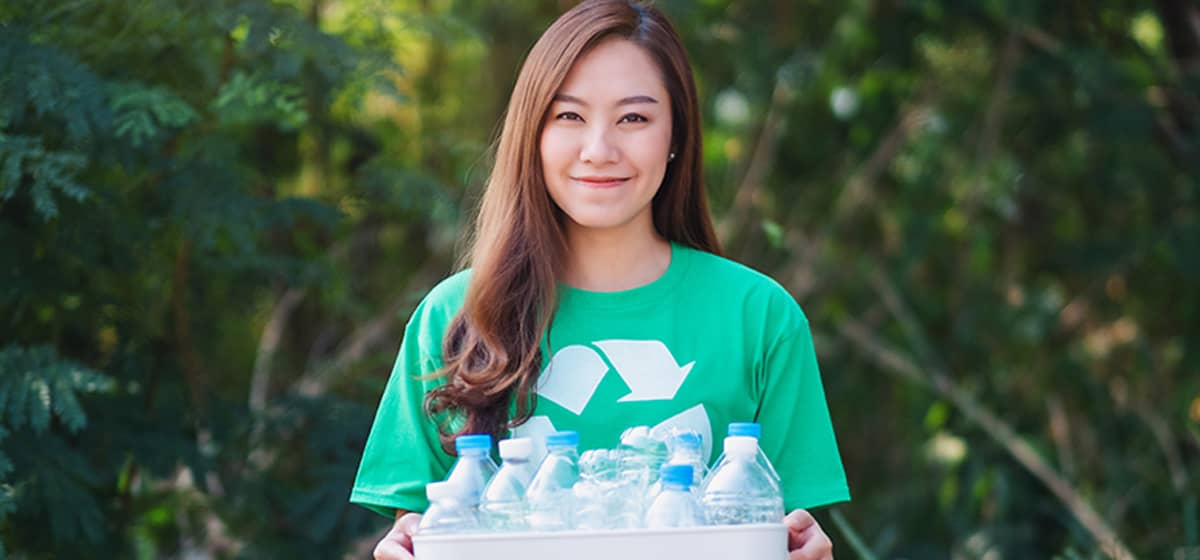
Ocean waste, plastic bottles and used coffee grounds – what do they all have in common? Well, they can all be recycled and made into brand new products! If you’re wondering what these waste materials can be made into – you’re in for a surprise!
As the country marks a year of the Singapore Green Plan 2030 in a few months, more and more businesses are investing in innovative methods to recycle and upcycle our everyday trash. This is especially timely and crucial given that consumerism continues on an upward trend. According to CNA, Singapore’s resource consumption per capita ranks 24th in the world, a sure sign that there is much room for improvement in this area.
In today’s blogpost, we want to spotlight four homegrown companies that are giving waste materials a brand-new lease of life. Read on to find out more!
1. Align Swim
A proudly Singaporean brand, Align Swim is anchored on the tenets of sustainability; every aspect of the brand’s decisions from production to distribution is made with our environment in mind.
All of their pieces are designed locally, and sent to an ethical factory in Bali, Indonesia to be manufactured. To minimise wastage, the brand is also conscious of not overproducing their swimwear – a thoughtful mindset shift in today’s fast fashion industry.
Each of its swimwear is produced from either Econyl, a form of regenerated nylon made from landfill or ocean waste items such as fishing nets, old carpets and textile scraps, or Repreve, a form of fibre made from recycled materials including plastic bottles.
This not only helps in saving these waste materials from polluting our oceans, but also reduces the energy and resources needed to make virgin materials, lowering our environmental impact and minimising greenhouse gases.
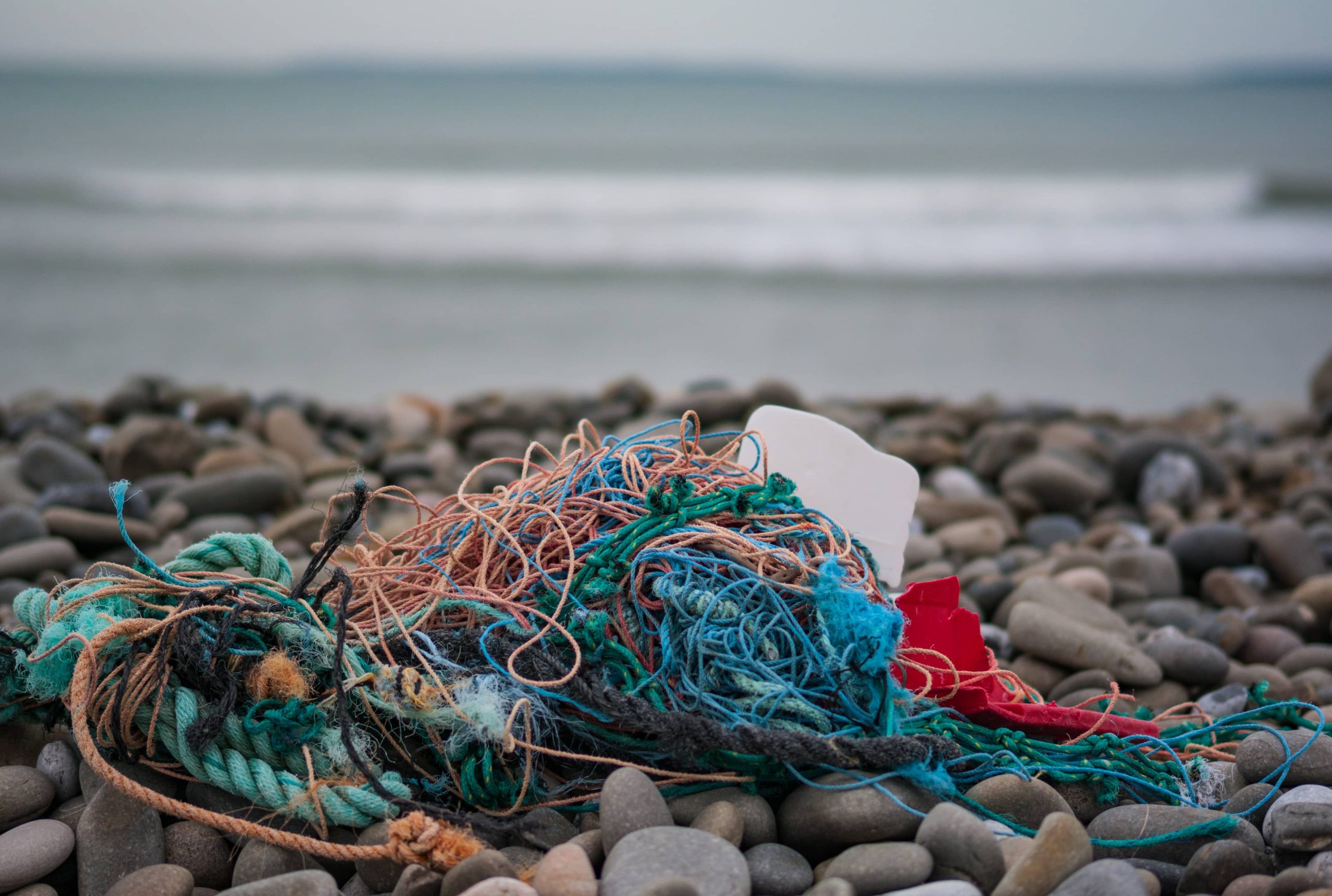
Beyond ensuring the sustainability of its swimwear, Align Swim also extends its eco-friendly initiatives to its mailing materials. All its products are shipped out in 100% compostable mailers or its custom recyclable Align Envelope. What’s more, if you’re looking to gift someone an Align Swim piece, look forward to having it beautifully wrapped in the brand’s custom designed Furoshiki Gift Wrap! The Furoshiki cloth can even be reused in many different ways including as a bag, scarf, or even passed on as a gift wrap for yet another gift.
2. Ayer-Ayer
A social enterprise, Ayer Ayer was born out of the mission to bring together different communities to create art pieces made from recycled microplastics. Not sure what microplastics actually are? Well, these small plastic pieces are actually the most prevalent type of marine debris found in our oceans, broken down from larger plastic waste that may have been disposed into our water bodies. While miniscule in size, these tiny pieces of plastic are harmful to marine life. Studies have shown that microplastics may disrupt these animals’ reproductive systems, cause liver damage and even alter their feeding behaviour.
Collecting and sorting these plastic trash that are washed up on our local shores, Ayer Ayer breathes new life into these materials by re-creating them into beautiful art pieces and furniture such as tables and chairs! These one-of-the-kind pieces can be found as bar tables at rooftop bar Potato Head Singapore, so do go and check them out!
Alternatively, you can also purchase unique art tiles made from plastic trash and use them as home decorative pieces. Ayer Ayer occasionally organises pop up sales of their one-of-a-kind artwork items, which you can keep an eye out for on their Facebook and Instagram!
For those who would prefer a hands-on experience, the brand also organises workshops that share with participants the many different facets of plastics; from production to recycling. To try your hand at making some handcrafted items from post-consumer plastic, check out more information here!
3. A1 Environment
Coffee is one of the most popular beverages in world and widely enjoyed across cultures all across the globe. But, have you ever wondered what happens to the used coffee grounds after our cup of joe is brewed?
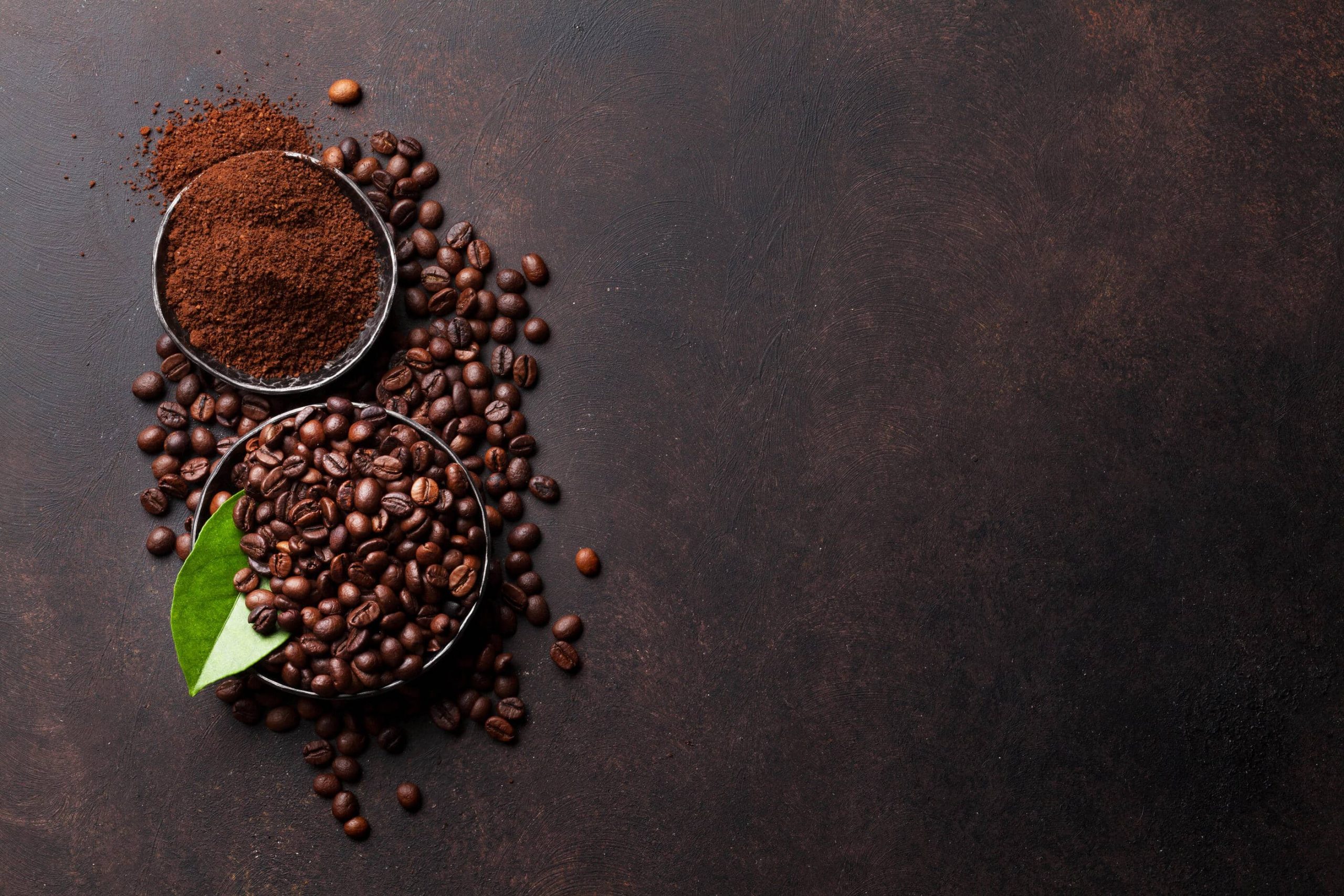
Currently, most of our spent coffee grounds is disposed into the bin and sent to our landfill for incineration, which contributes to our growing food waste issue. Eventually, these coffee grounds decompose in the landfill and release a great amount greenhouse gases, resulting in a direct impact to our environment.
However, one homegrown company is changing the landscape. With the aim to close the loop in the coffee industry, A1 Environment recovers coffee grounds from various industries including F&B and hospitality, and transforms them into wood-like panels that can be used to make furniture. To date, the company has converted more than 650,000kg of coffee, giving them a new lease of life. With this innovative solution, A1 Environment not only saves these used coffee grounds from the landfill but also reduces the number of trees cut down to make furniture!
As A1 Environment scales up its operations this year, the firm is planning to launch a range of furniture as well as other items such as flowerpots – stay tuned for updates on their Instagram and Facebook pages!
In addition, A1 Environment also uses these spent coffee grounds for food compost in community gardens to encourage other like-minded individuals to make use of these coffee grounds that deserve a second chance. You can get in touch with them to help boost and green up your local community gardens here!
4. Tay Paper Recycling
With a myriad of paper recycling services and more than 32 years of paper recycling experience, Tay Paper Recycling has played an instrumental role in diverting much of Singapore’s paper waste from the landfill. It offers the full suite of recycling services from on-site shredding, collecting to sorting, making it a breeze for any company to get onboard as one of their partners. In addition to paper, Tay Paper also recycles plastics, old clothes and e-waste.
Geneco is proud to have partnered with Tay Paper Recycling during our #ChangeBringsProsperity initiative again after last year’s successful collection and recycling of 410kg of red packets! From now till 6 March, simply drop off your used or excess red packets at any of the 24 Used Red Packet Recycling Bins located at any of our partners – CRU, IUIGA, Refash, and Wisma Atria – island-wide. These red packets will then be pulped and made into paper products including tissue, paper towels, and of course, even more paper!
And while you’re doing good for the environment, share with us which Used Red Packet Recycling Bin you will be dropping off your red packets at on our Instagram or Facebook posts to stand a chance to win $28 worth of eCapitaVouchers!
As we look towards embarking on a greener journey this year, we hope that you’d be inspired to support these local companies paving the way for a brighter and more sustainable tomorrow.
Together, let’s continue to #PowerTheChange and share our prosperity with our future generations.
Image Credits: Nylon Coffee Roasters
Source: The Sustainability Project
Your DIY guide to making recycled paper at home
- Home
- 2022 (
- Page 2 )
[Post Date]
Your DIY guide to making recycled paper at home

Every day, Singapore produces approximately 16,120 tonnes of waste – that’s enough to fill about 7 Olympic-sized swimming pools! However, with a low domestic recycling rate of 13%, most of these waste are sent for incineration at our local landfill. Given our limited landmass in Singapore, this is a worrying trend as there is simply not enough space to hold all our trash! Our only landfill – Semakau Landfill – is estimated to be fully utilised by 2035.
As Singapore works towards building a circular economy, how can each of us contribute by increasing our recycling efforts? For starters, let’s focus on recycling one of the most common items – paper.
There are many ways which we can recycle paper. This includes dropping them off at the nearest recycling bin or selling them to our local karang guni – rag and bone man.
However, did you know that you can try paper recycling right at home as well, and customise them into your very own greeting cards or gift tags that’s truly one of its kind. So here’s an easy and fun eco-friendly guide to get you started on making your own recycled paper!
The entire process is simple – no fancy craft tools required. All you need are:
- Old / used papers such as newspapers, magazines, notebooks etcetera
- An A5-sized hard plastic mesh
- Cotton cloth
- Large container, preferably A4-sized or bigger
- Water
Step 1: Tear your old pieces of paper into small bits
Gather your old scraps of paper and make sure that they’re void of any plastic or staples before tearing them into small pieces about an inch wide and throwing them into your container. Feel free to make the pieces of paper as tiny as possible to get them soaked more easily in the next step.
Should you have some old scraps of thicker paper such as drawing paper or watercolour paper lying around, do also include them into the container as well – this will help in producing a stronger, thicker quality for your final product.

Pro Tip: Experiment with different colour combination paper scraps to produce beautiful handmade paper with a rustic feel. Throwing in different textured paper will also yield a more unique final product!
Step 2: Soak your papers bits
Thereafter, fill your container of paper scraps with water before leaving them to soak for 24 hours. While the ratio of pulp to water can vary depending on how thick you’d like your sheets to be, the general rule of thumb is to have equal measures of paper pieces and water. The more pulp to water, the thicker your paper will be, so feel free to experiment by changing up the ratio. Do remember to stir the bowl occasionally to prevent the paper pieces from clumping together!
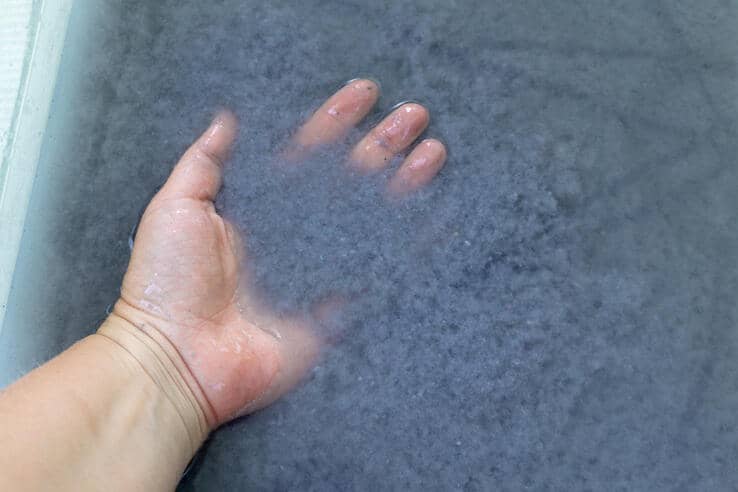
Pro Tip: To produce whiter paper, add about a tablespoon of white vinegar to bleach the pulp mixture
Step 3: Dip the A5 plastic mesh into the container
After 24 hours of soaking, you are now ready to start making your first piece of paper! For those of us wondering about the kind of plastic mesh that would work for this – check out an example below! Essentially, any plastic mesh that is hard and sturdy would do the trick.

Slowly dip one side of your plastic mesh into the mixture at a 45-degree angle and flatten it at bottom of the container. Gradually, the paper mâché will start gathering on top of the mesh, covering it from top to bottom. Allow the paper mâché to settle on the mesh as evenly as possible.
Do be patient for this step ad you may end up with sheets of uneven and bumpy paper if the pulp mixture does not settle evenly!
Step 4: Shape the paper mâché
Lift the mesh out of the container with as little disturbance to the pulp mixture as possible. Thereafter, gently use your fingers to even out the borders of the paper mâché on the plastic mesh. Don’t worry if they’re not perfect – it’s part of the process of DIY-ing our own recycled paper!
Once you’re happy with the shape of your paper, you can even add some decorative elements such as dried leaves or dried rose petals to beautify your recycled paper. Feel free to let your creativity run!
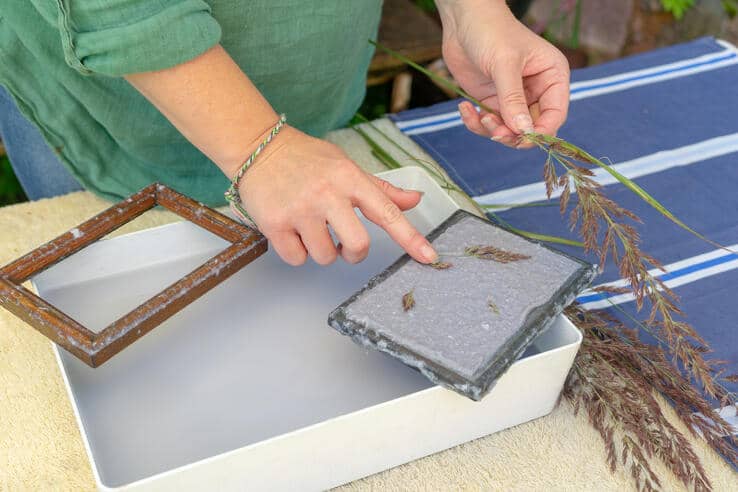
Step 5: Flip the paper mâché on a non-stick surface
Once the borders are more or less even, place the paper mâché side of the plastic mesh down on a non-stick surface, such as a wooden or glass table, before using your cotton cloth to soak as much water as possible from the top. When most of the excess water has been drained, carefully peel off the mesh and allow the paper mâché to dry overnight. If you’re excited to start using your recycled paper as quickly as possible, you can even use a hairdryer to hasten the process.
And that’s it! Once the paper mâché is completely dried, they should be slightly wavy and crisp. You can bind the various pieces together into your very own unique notebook or cut them up into smaller pieces to form a gift tag. You can even use these handmade papers as a Valentine’s Day card, or for other occasions and celebrations throughout the year – the possibilities are endless!
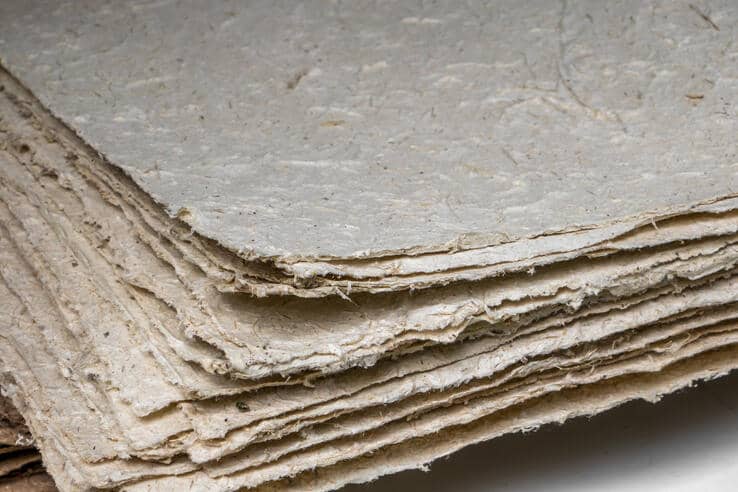
We hope that this easy tutorial will inspire you to recycle your old pieces of paper right at home. This activity is also a great opportunity to educate our little ones on how they can effect a change for our environment through such small but meaningful actions!
And if you find yourself wondering what to do with the stack of red packets you’ve collected this Chinese New Year, you can recycle them too by joining us in our #ChangeBringsProsperity initiative! Simply drop them off at any of our 25 Used Red Packet Recycling Bins located across the island from now till 6 March at Wisma Atria, or any IUIGA, CRU, and our Changemaker – Refash‘s outlets – after you’ve emptied them of course!
These red packets will then be collected by Tay Paper Recycling, where they’ll be pulped and made into other paper products such as tissue, paper towels and more writing paper!
Together, we can all #PowerTheChange by adopting a zero-waste lifestyle and work towards a greener future.
Image Credits: Nylon Coffee Roasters
Source: The Sustainability Project
5 Nature Reserves to Embark on a Wildlife Spotting Adventure
- Home
- 2022 (
- Page 2 )
[Post Date]
5 Nature Reserves to Embark on a Wildlife Spotting Adventure
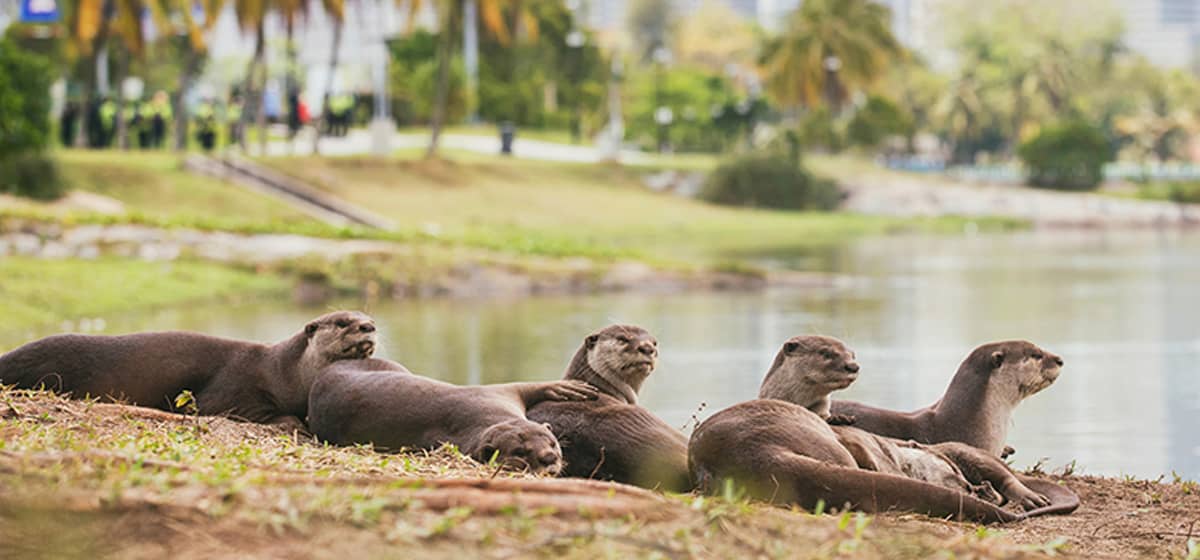
Living in a concrete jungle like Singapore, it may be easy to forget that we share our island with over 40,000 species1 of flora and fauna. These include native blooms such as the Wild Rose Apple and Akar Kepapal, which we’ve featured in our Chinese New Year Red Packets this year in collaboration with the National Parks Board (NParks)’s Garden City Fund, as well as a diversity of animals like owls, crocodiles and of course – our favourite families of otters.
This comes as no surprise since our sunny island used to be a rich and dense tropical jungle. While Singapore has rapidly urbanised since its early days, wild animals can still be spotted today at pockets of nature around our country given continuous conservation efforts.
If you’re up to spot some elusive animals living within our midst, grab your hiking boots for a trip to the wild right here in Singapore! Explore the many green spaces on our little red dot and get ready to be fascinated by the myriad of species that call Singapore home. At the same time, do keep a look out for the many native flowers that we’ve mentioned in our previous blogpost here. These wildlife add to the dynamism of our urban city, and truly makes Singapore unique.
Without further ado, here’s introducing five animals native to Singapore that can’t be missed:
1. Estuarine Crocodile at Sungei Buloh Wetland Reserve
Naturally found in our local wild, with its first sightings in Singapore tracing back to the 1800s2, the Estuarine Crocodile, also known as Saltwater Crocodile, is one of the largest crocodile species in the world and can grow to more than five metres in length3. This majestic creature often camouflages itself by keeping partially submerged in water, with only its eyes, nostrils, and part of its back exposed4, and can be found in coastal areas and wetlands such as our Sungei Buloh Wetland Reserve5.
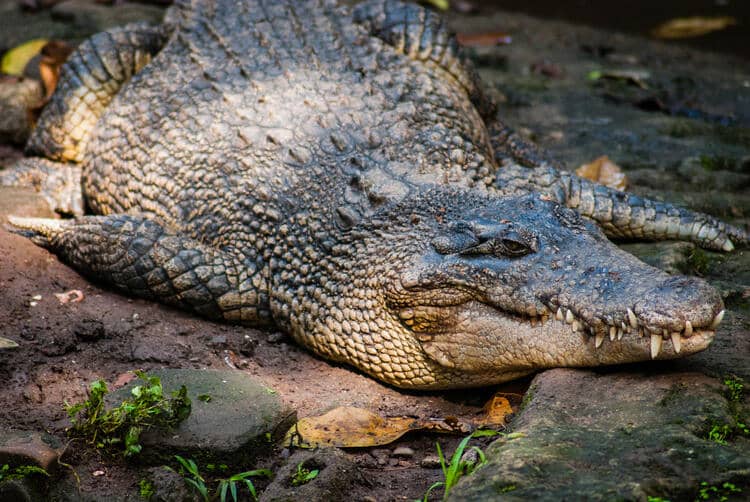
Fun fact: The Estuarine Crocodile has the most powerful bite out of all species of crocodiles, earning them the reputation as a top apex predator4!
Sadly, the Estuarine Crocodile is classified as critically endangered3 both internationally and in Singapore due to the destruction of its habitats, as well as overhunting for its hide to make products such as shoes and handbags. Overseas, its hatchlings are also sometimes sold as pets.
Besides keeping an eye out for these crocodiles, do look out for the wide range of native flora that Sungei Buloh is also home to. These include the bright yellow Sea Hibiscus6 and sweet scented Penaga Laut</strong class=”f-blue”>7 flowers, the latter of which is often used as dye, oil and even medicine. In addition, many native species such as the Mangrove Horseshoe Crab8 and Giant Mudskipper8 are also residents of Sungei Buloh. What’s more, the wetland also counts reptiles such as the King Cobra8 and Malayan Water Monitor8 as part of its dynamic ecosystem.
2. Sunda Pangolin at Bukit Timah Nature Reserve
The Sunda Pangolin, is a scaly mammal that is native to Singapore and the larger Southeast Asian region9. A unique animal unlike any other, the pangolin is covered with brown scales and has long claws as feet10. Found at various areas of Singapore, including Bukit Timah Nature Reserve9, this shy and solitary animal hunts mainly at night and feeds on insects such as ants and termites. For adult pangolins, it can consume up to 70 million insects every year9!
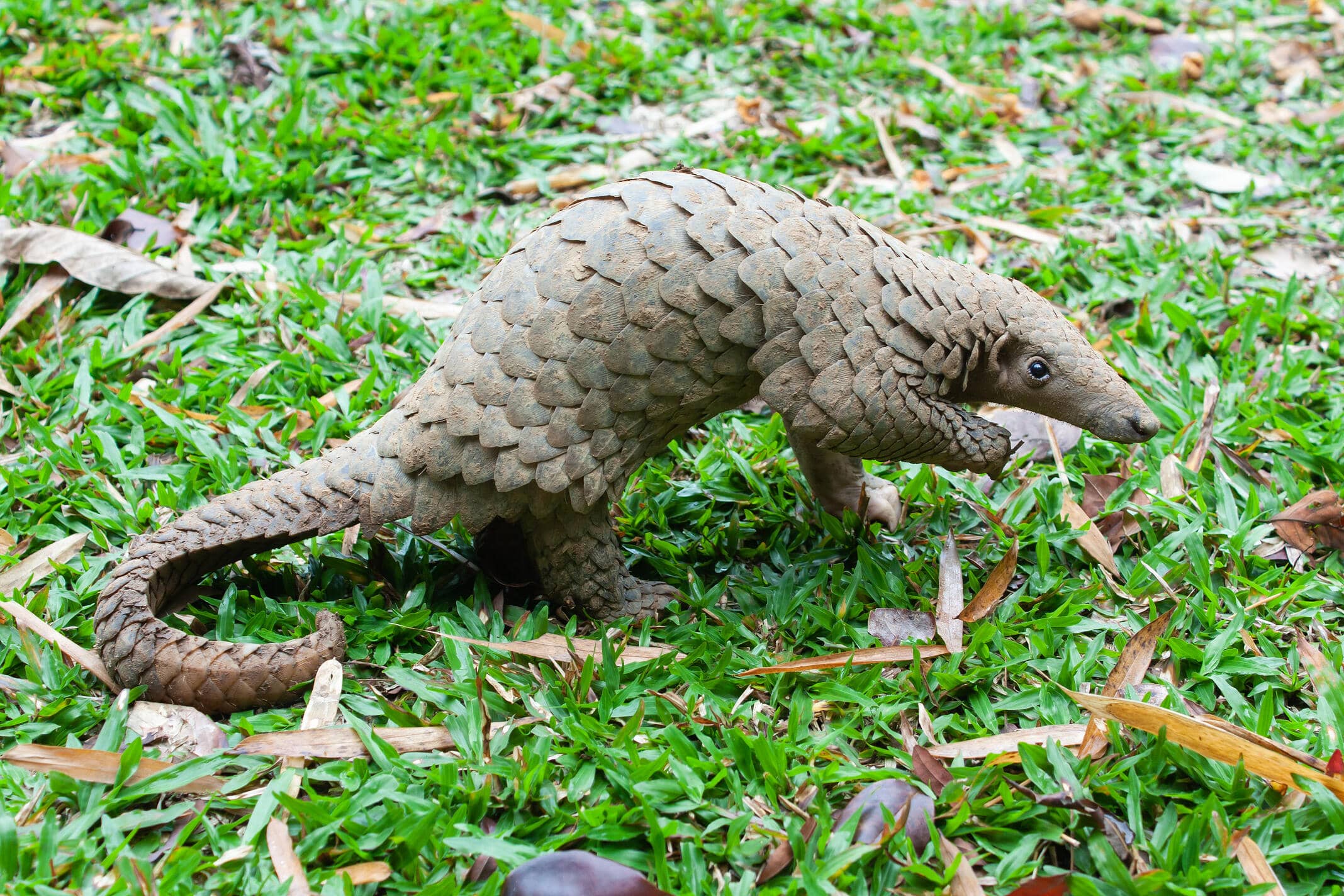
Fun fact: Its tough scales are actually made of compressed hair9! When threatened, the pangolin curls itself up into an armoured ball by wrapping its tail around its body to protect its non-scaly underparts, and may even use its anal gland to produce a foul smell to deter predators9.
Similar to the Estuarine Crocodile, the Sunda Pangolin is listed as critically endangered9 in Singapore due to the mass urbanisation that resulted in widespread habitat loss. Internationally, the low population of these animals can be attributed to over poaching for its meat and scales9. This is further exacerbated by its low fertility rate, resulting in its global population depleting much faster than it can recover9.
Given its elusive nature, it’s your lucky day should you come across a pangolin when visiting Bukit Timah Nature Park! However, fret not should you not be able to spot one as the park is also home to a wide range of other native plants. This includes the Seraya11 that is one of the oldest trees in Singapore, estimated to be at least 150 years old12!
3. Common Palm Civet at Bukit Batok Nature Park
Known affectionately as the Toddy Cat13, the Common Palm Civet is a nocturnal native mammal found in areas such as Bukit Batok Nature Park13. An omnivore, the civet can often be spotted navigating from tree to tree and feeding on fruits, leaves and worms13.
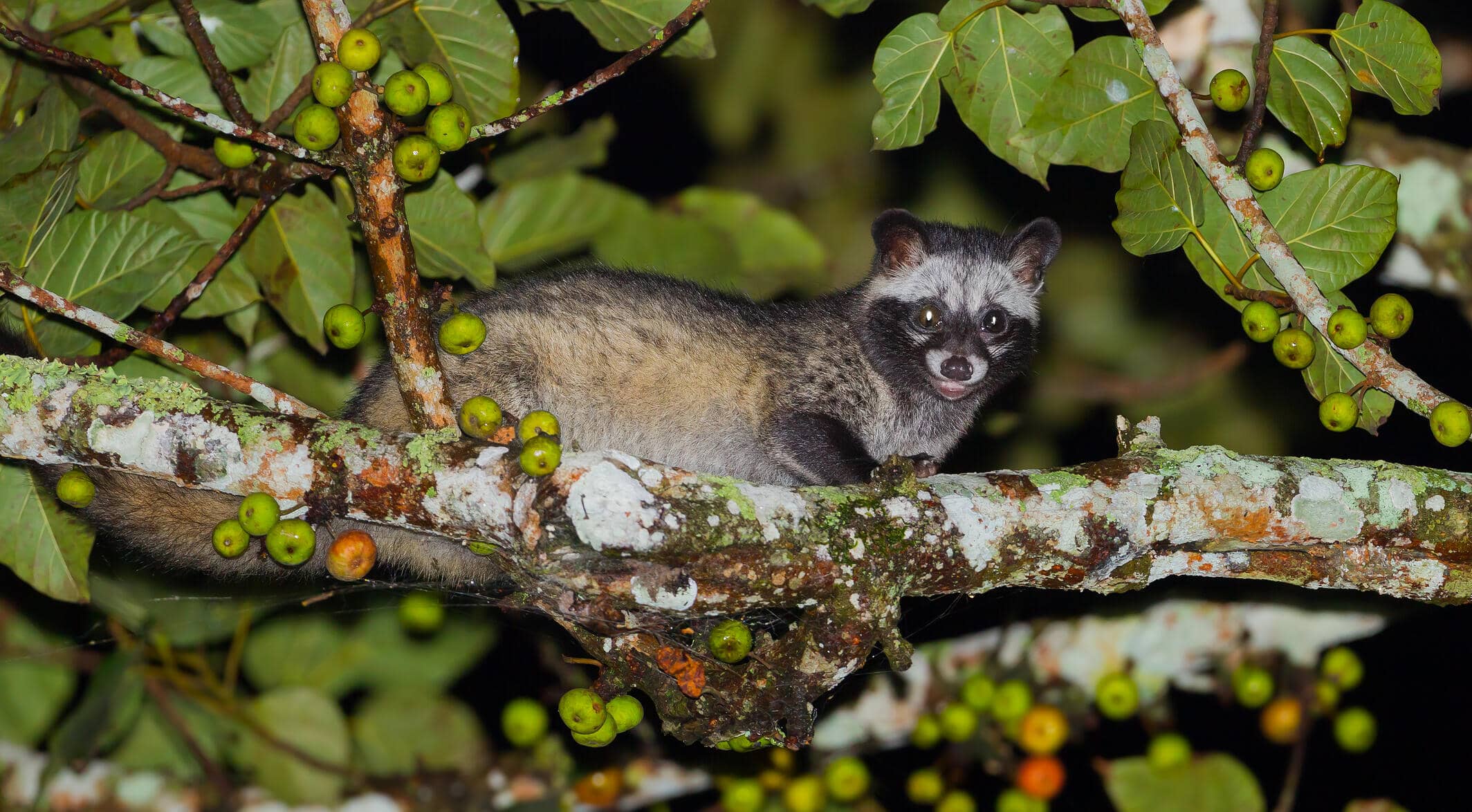
Fun fact: The length of its tail is almost of equal length as its entire body14!
Like other members of the civet family, the Common Palm Civet has a pair of stink glands near the base of its tail, which secretes a foul-smelling liquid when it feels threatened15. Interestingly, however, some have described these secretions as smelling like pandan16!
If you’re a coffee lover, you may have also heard of civet-processed coffee, otherwise known as Kopi Luwak. However, due to increasing global demand for this type of coffee, it has given rise to unethical production practices17, often involving the poor treatment of these civets. Hence, should you come across Kopi Luwak, we’d encourage you to be mindful and say no to such coffee choices!
Besides keeping an eye out for these civets at Bukit Batok Nature Reserve, do also look out for the leafy Tembusu18 trees that are native to Singapore. These large trees can grow up to 25 metres18 in height and is one of the many heritage trees identified in Singapore.
4. Wild Boar at Pasir Ris Nature Park
Native to Singapore, wild boars are large pigs that can weigh up to 100kg19. While they are natural omnivores19, these animals feed mainly on a plant-based diet that includes seeds, tubers and young plants19. With a keen sense of smell, these wild boars are foraging animals and are able to dig out underground tubers and seed for food20.
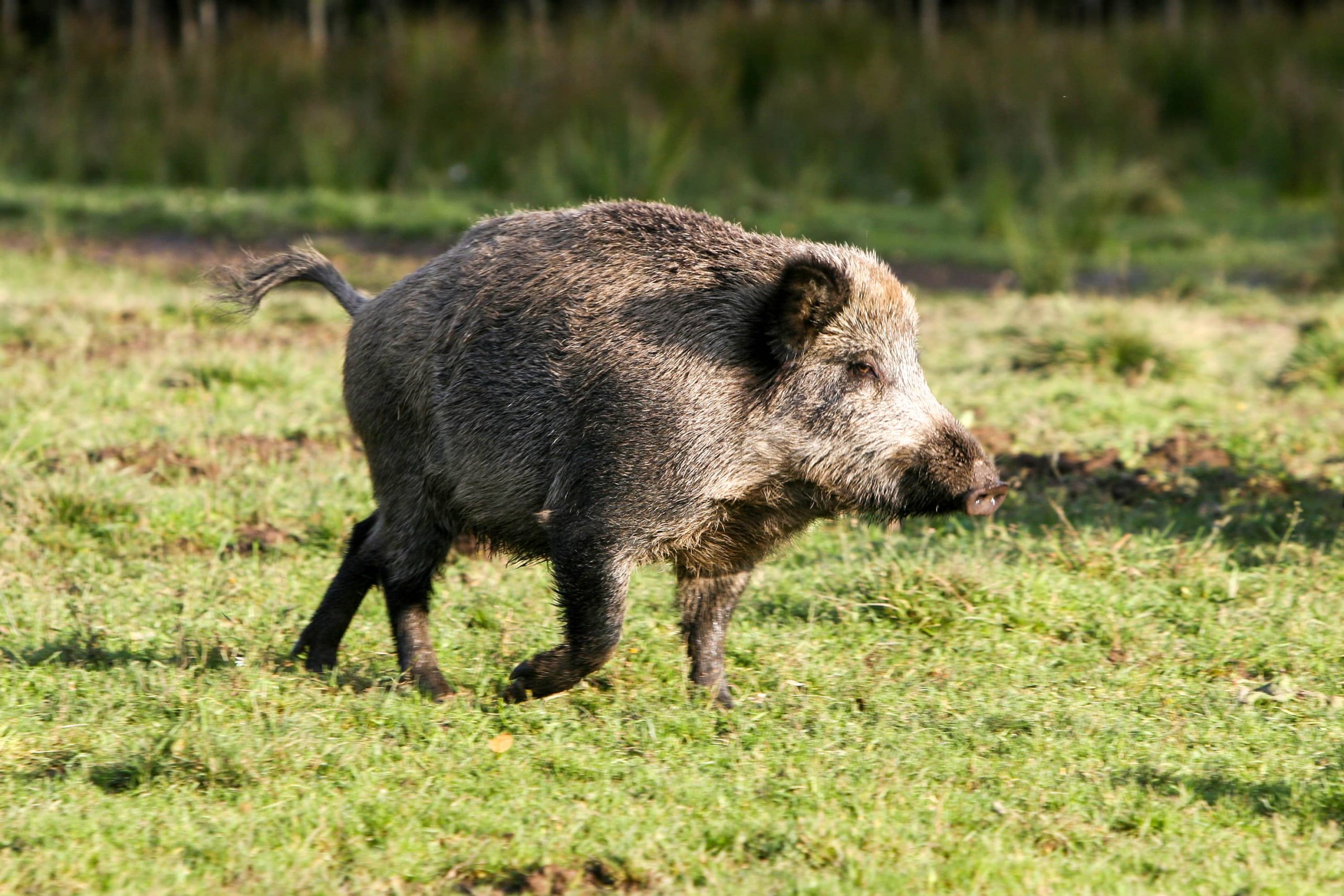
Fun fact: Despite their hefty weight, wild boars are surprisingly strong and fast runners20! They are also especially fertile, in which the females can start reproducing at 18 months19 of age and give birth to up to six piglets a year19!
In addition to spotting these animals at Pasir Ris Nature Park, do also keep your eyes peeled for the beautiful Blue Glassy Tiger butterfly21 that is also native to Singapore and identifiable by its unique bluish-grey wings. The park also features an edible garden21 with species such as lemon grass, tapioca and even the cocoa plant that is definitely worth exploring.
5. White-throated Kingfisher at Punggol Waterway Park
With a dark chocolate head, flank and belly, the White-throated Kingfisher gets its name from its contrasting whitish throat that extends down towards its breast. It’s electric blue wings and back also makes it easily identifiable from afar22. Native to Singapore22 and as one of the more common kingfishers in Southeast Asia22, it is highly adaptable and can be spotted frolicking at Punggol Waterway Park 23, alongside fringes of the reservoir as well as open fields.
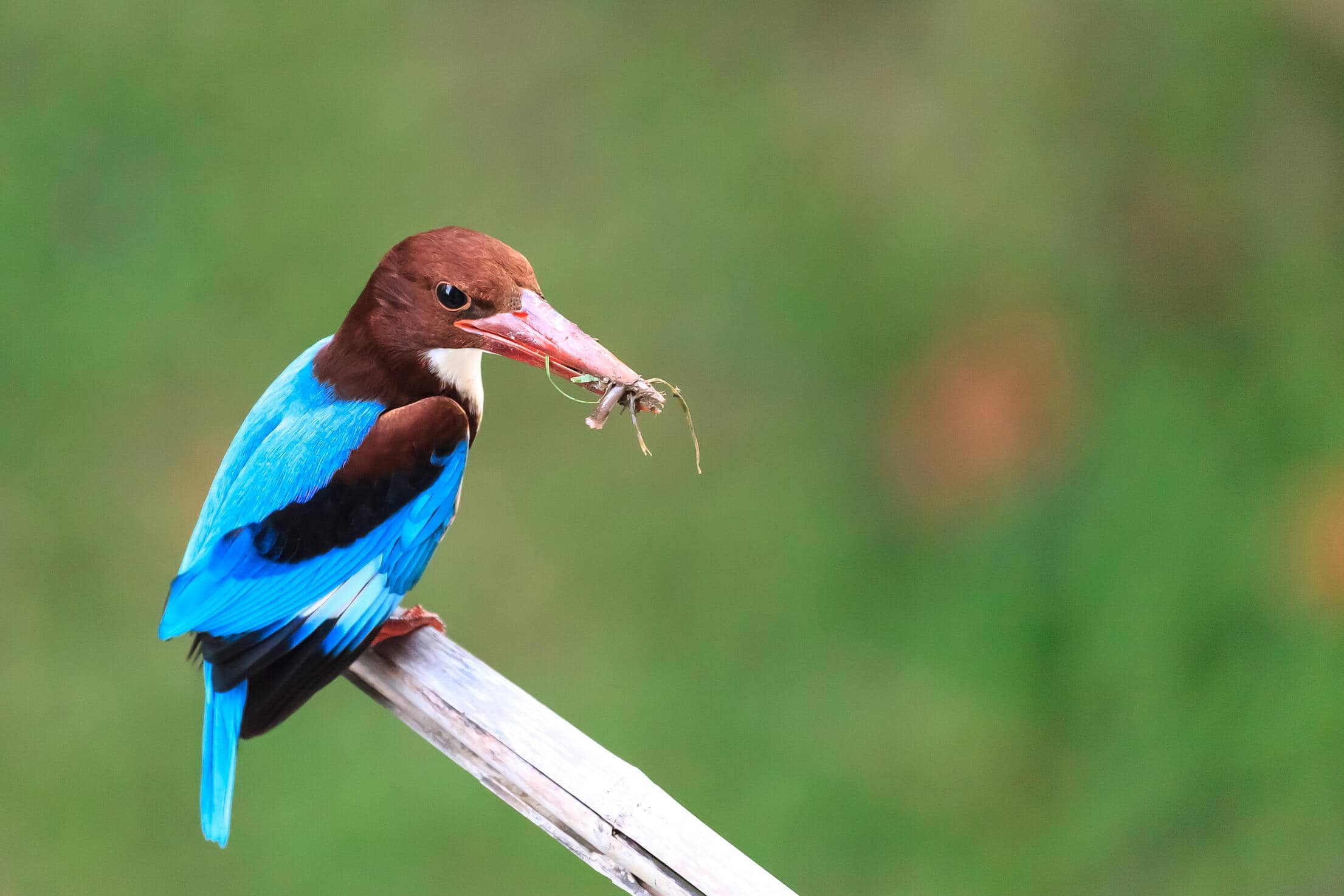
Fun fact: the White-throated Kingfisher is one of the bigger kingfisher species found locally and can grow up to 28 centimetres22. Its considerable size allows it to not only feed on insects, but also prey on fish and small animals22.
If you’re heading down to Punggol Waterway Park to spot one of these lovely birds, do also check out Singapore’s first man-made mangrove – My Waterway@Punggol24. This man-made site features a variety of freshwater-tolerant mangroves and houses many native plant species such as the Lumnitzera Iittorea24 and Kandelia candel24. Since establishing this site, it has attracted a spectrum of endangered bird species and flora, allowing them to flourish within the area and contribute to the thriving ecosystem.
We hope the above has pique your interest in heading out to discover and appreciate the whole range of wildlife we have in our country. If you’re curious to learn more about the other animals inhibiting our sunny island, check out one of Sir David Attenborough’s newest Netflix documentary here! Aptly named “Wild City”, this film unveils a whole different dimension of Singapore and takes you through the various unseen natural treasures that we might not even be aware of!
Together, let us remember the importance of a sustainable living environment, and continue to #PowerTheChange by conserving our green spaces and protect our natural heritage, so that we can share this prosperity with future generations.
Image Credits: Nylon Coffee Roasters
Source: The Sustainability Project
References:
- (2018, October). National Parks Board, Wildlife in Singapore
- (2021, October). The Straits Times, 'Crikey!': 6 recent crocodile sightings around Singapore
- (2021, February). National Parks Board, Estuarine Crocodiles
- (2022). Mandai Wildlife Reserve, Estuarine crocodile
- (2019, August). National Parks Board, Crocodylus porosus Scheneider, 1801
- (2021, August). National Parks Board, Hibiscus tiliaceus L.
- (2021, August). National Parks Board, Calophyllum inophyllum L.
- (2019). National Parks Board, Humble Natives of Sungei Buloh Wetland Reserve
- (2021, February). National Parks Board, Pangolins
- (2019, August). National Parks Board, Manis javanica Desmarest, 1822
- (2019). National Parks Board, Bukit Timah Nature Reserve: A Model for Conservation
- (2018). National Parks Board, In The Company Of Giants
- (N.D.). National Parks Board, Mammals Native to Singapore
- (2021, November). Kidadl, The Asian Palm Civet: 15 Facts You Won’t Believe!
- (2022). Mandai Wildlife Reserve, Common palm civet
- (2018). National Parks Board, Common Palm Civet
- (2016, April). National Geographic, The Disturbing Secret Behind the World’s Most Expensive Coffee
- (N.D.) National Parks Board, A Visit to Bukit Batok Nature Park
- (N.D.) National Parks Board, Wild Boars
- (N.D.) National Parks Board, What Are Wild Boars?
- (N.D.) National Parks Board, Your Guide to Pasir Ris Park
- (2019). National Parks Board, Meet the ‘Kings’ of Singapore’s Skies
- (2014, November). National Parks Board, Interesting Sights at Punggol Waterway Park
- (N.D.) National Parks Board, My WaterWay@Punggol. A Living Laboratory for Urban Living Solutions
4 Nature Reserves to Explore our Native Flora
- Home
- 2022 (
- Page 2 )
[Post Date]
4 Nature Reserves to Explore our Native Flora
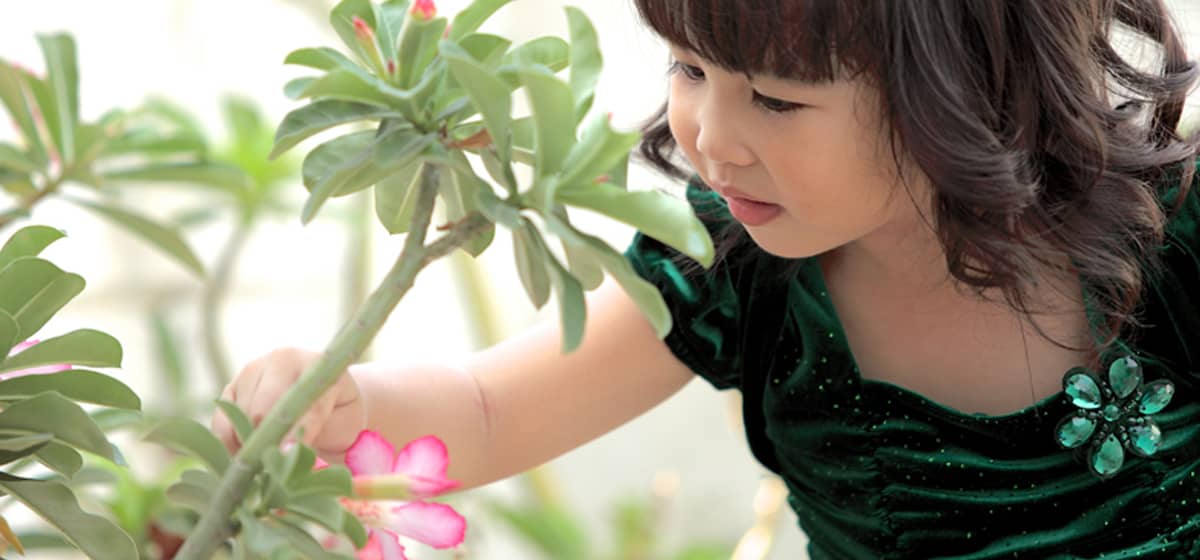
Today, Singapore is one of the greenest cities in the world, safeguarding more than 7,800 hectares of green spaces. The Garden City we enjoy today is a result of decades of hard work by our forefathers, including our then-Prime Minister Lee Kuan Yew. Known as the “Chief Gardener of Singapore”, Mr Lee introduced the “Garden City” vision in 19671, just two years after the country gained independence, with the aim to transform Singapore into a vibrant city with abundant lush greenery. This formed the core of our greening journey and the foundation in which our City in Nature2 vision, a key pillar of the Singapore Green Plan 2030, is built upon.
Over the past 50 years, more than a million1 trees have been planted across the island. Through such sustained efforts, our little red dot today boasts over 2,2003 plant species with a myriad of native flora and fauna thriving in these nature spots.
This Chinese New Year, we partnered with the National Parks Board (NParks)’s Garden City Fund to launch four exquisitely designed red packets spotlighting our native flora. With this initiative, we aim to build greater appreciation and conservation awareness among Singaporeans for our local blooms while encouraging the exploration of the abundant nature spaces in Singapore.
Each blossom featured on our red packets this year has its own unique story, and we’re excited to share more about them today while introducing a few of our other native species which you can keep an eye out for during your next hiking adventure!
1. Rose Myrtle (Rhodomyrtus tomentosa) in Coney Island Park
This beautiful magenta pink flower makes its home along the sandy beaches of Singapore’s Coney Island and thrives on the sunny weather we enjoy in Singapore. Resembling Japan’s famed cherry blossoms when in full bloom, the Rose Myrtle also produces a velvety fruit that serves as sustenance for many bird species, caterpillars, moths, and even humans!
This versatile fruit is used for a range of purposes including sweets such as jams or tarts4 and even medicines4 to treat stomach ache and diarrhoea. In Vietnam, the locals also ferment the fruit to make a type of Vietnamese wine4 known as ruou sim.
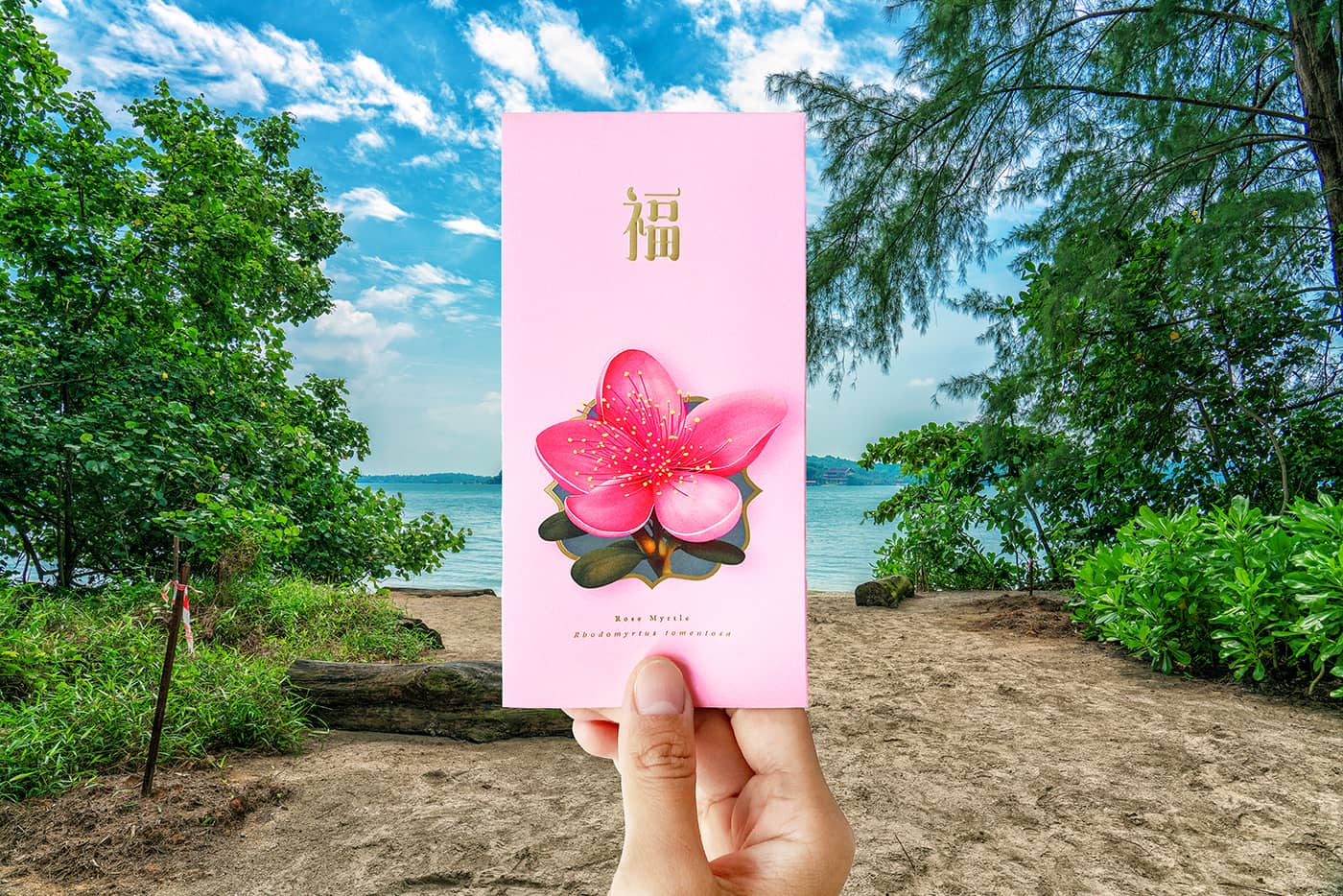
Besides the Rose Myrtle, Coney Island is also home to a variety of native flora given its recent habitat enhancement programme that aims to reforest over 50 different native coastal species5. Many of these reintroduced species are nationally critically endangered plants such as the small-leaved Nutmeg5 (Knema globularia), Silver Bush5 (Sophora tormentosa), and Damak-damak Tahun5 (Scolopia macrophylla), a tree which was presumed to be extinct until its rediscovery in 2014!
Till date, Coney Island is the only place in Singapore5 where the Damak-damak species can be found, thanks to sustained efforts to preserve our local natural heritage so do keep a look out when you head down for a day of exploration!
2. Derum (Cratoxylum maingayi) in Windsor Nature Park
A slow-growing deciduous tree that can reach a whooping height of 30 metres6, the Derum can be found at the heart of Windsor Nature Park – one of Singapore’s newer green spaces. The tree produces a faintly fragrant flora that ranges from eye-catching crimson to an interesting combination of pinkish-yellow.
While not commonly available, the Derum’s durable timber6 can be used in construction and furniture-making. Unfortunately, due to the time needed for the Derum to mature completely, the tree has been classified as a critically endangered7 species in Singapore.
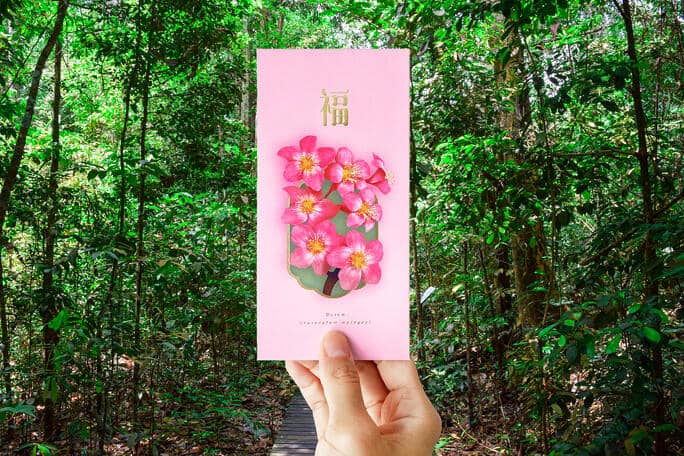
However, if you’re hoping to catch a glimpse of this rare gem during your next visit to Windsor, just look out for a pop of reddish leaves against the otherwise uniform green landscape of other trees. A conspicuous feature, the young leaves of the Derum tree are notably reddish7 before maturing into a deep forest green.
What’s more, keep your eyes peeled at Windsor’s Hanguana trail for some rare native plants that are named after Singapore such as the Zingiber singapurense8 and Durio singaporensis8. Over the years, the replanting of over 4008 trees in the park, including a myriad of native species, has helped to enhance the habitat of Windsor. This in turn has helped in attracting and protecting our local fauna including native animals such as our Sunda Pangolin (Manis javanica)8 and the Mangrove Snake (Bioga dendrophila)8, which contributes to the biodiversity of the ecosystem.
3. Akar Kekapal (Hoya diversifolia) in Pulau Ubin
Another critically endangered9 native plant, the Akar Kekapal is an epiphytic climber that often forms a dense covering on tree branches that they grow on. Resilient9 to a wide range of environmental factors, the plant can be found growing on mangrove trees in Pulau Ubin and even on oil palm in neighbouring Malaysia.
Its flowers9 often grow in umbrella clusters, forming a bouquet-like arrangement of star-shaped cream and pink blossoms that are stunning and fragrant to the senses.
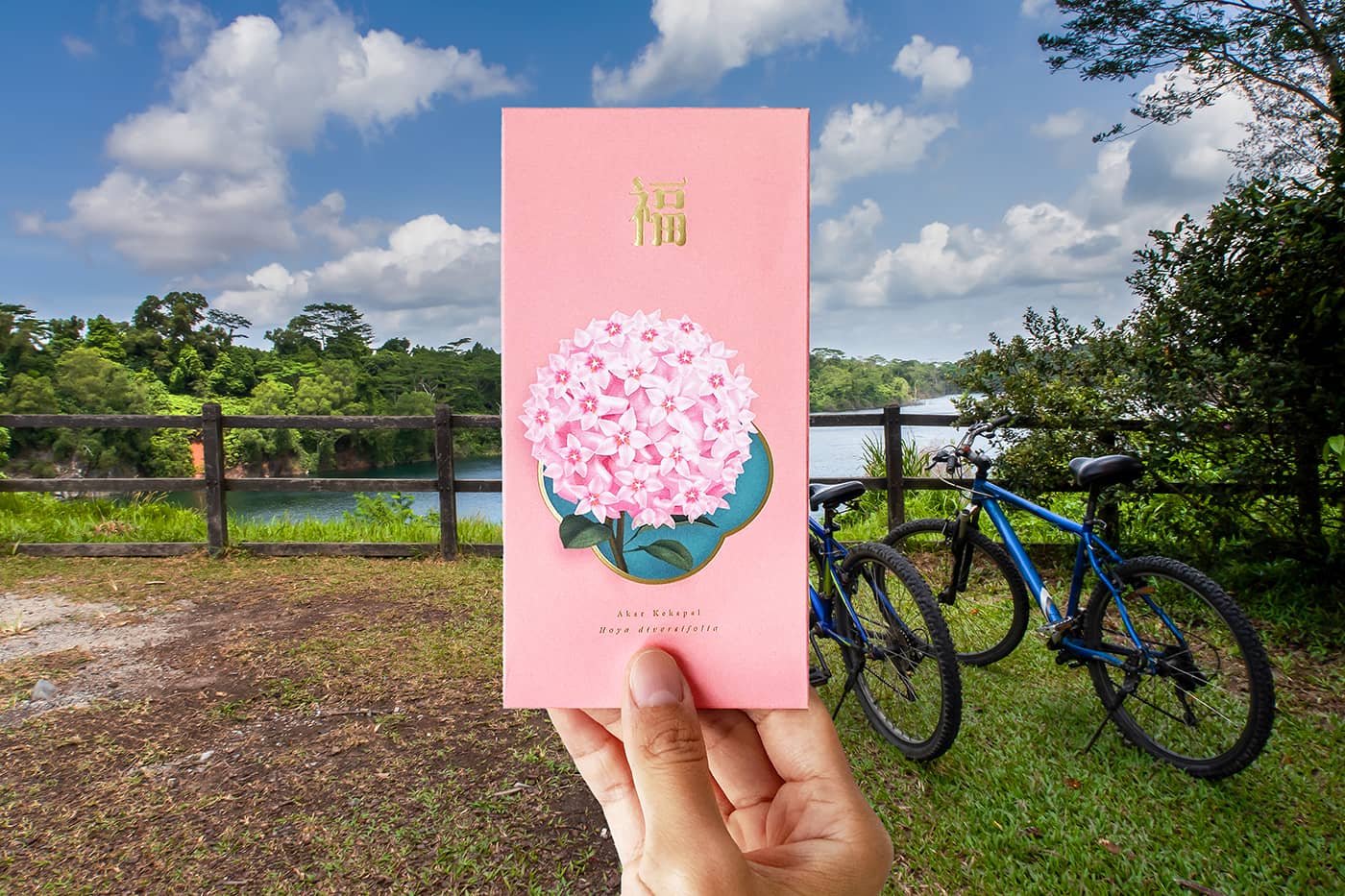
If you’re on a quest to spot as many native plant species as possible, Pulau Ubin is the right place to be! In addition to the unique Akar Kekapal flowers, keep a look out for its abundance of local plants including the Ficus stricta10, a rare species of the strangling fig, and the Jamba (Neuwiedia veratrifolia)10, a yellow orchid that is critically endangered. According to NParks, it estimates that Pulau Ubin has over 78611 native plants, with many of them very rare and not found on mainland Singapore!
As the host to the largest mangrove areas in Singapore, Pulau Ubin is also home to one of the rarest mangrove species in the world – the Eye of the Crocodile10, otherwise known by its scientific name of Bruguiera hainesii. There remains only about 200 of these plants worldwide, with 11 of them found in Singapore.
4. Wild Rose Apple (Syzygium pycnanthum) in Central Catchment Nature Reserve
Finally, the last (but not least) of our four flowers – the Wild Rose Apple an attractive and showy species with unique flora features. Similar to the Akar Kekapal, the Wild Rose Apple is tolerable12 against strong sunlight, high wind and frequent salt spray conditions; and can be found at the Central Catchment Nature Reserve and Pulau Ubin12. Both its flowers and fruits are edible and serve as food to many bird species.
The Wild Rose Apple is also classified as one of Singapore’s critically endangered12 plants, joining the list of species that NParks is on a mission to conserve.
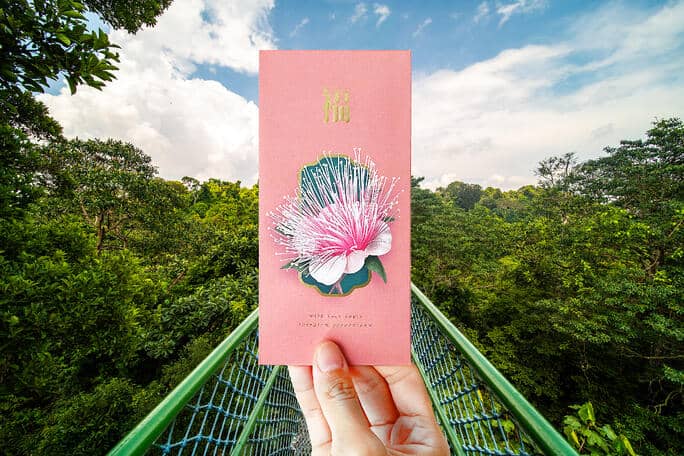
Besides the Wild Rose Apple, the Central Catchment Nature Reserve is also home to a wide range of native wildlife such as the Keruing13 (Dipterocarpus spp.), Colugo14 and the elusive Raffles’ Banded Langur15. It is believed that there are only 6015 langurs left in Singapore, limited to the Central Catchment Nature Reserve – this means that the chance of spotting one is extremely rare so do keep an eye out for it!
As the largest of nature reserves, the Central Catchment Reserve is also known as the “green lung” of Singapore and is a popular spot for nature lovers!
Fun fact: it also features the only freshwater swamp forest found in Singapore – the Nee Soon Swamp Forest16 – so do head down to check it out!
We hope that these lesser-known facts have intrigued your interest and if you’d like to win yourself these red packets, take part in our social media contest on Facebook and Instagram where you simply have to tell us your favourite local nature park and the reason why.
Two lucky winners will even walk away with a year worth of free electricity with Power Eco Add-on, Singapore’s first and only customisable green add-on for an electricity plan, plus a set of Limited Edition Geneco Red Packets! 50 lucky winners will also get to receive 2 sets of red packets and $28 eCapitaVouchers!
So what are you waiting for? Lace up your walking shoes and explore the various green spaces that Singapore has to offer.
Together, let’s continue to #PowerTheChange and conserve our natural biodiversity, and share our prosperity with our future generations as we build our City in Nature!
References:
- (2015, March). National Library Board, “Garden City” Vision Introduced
- (2021, October 8). National Parks Board, Singapore, a City in Nature.
- (2016). National Parks Board, Natural Heritage: 10 Native Plants of Singapore.
- (2021, October 14). National Parks Board, Rhodomyrtus tomentosa (Aiton) Hassk.
- (2017). National Parks Board, Working Together to Enhance the Native Coastal Habitat at Coney Island Park.
- (2021, August 6). National Parks Board, Derum.
- (2021, October 14). National Parks Board, Cratoxylum maingayi Dyer.
- (N.D.). National Parks Board, Windsor Nature Park.
- (2021, August 19). National Parks Board, Hoya diversifolia Blume.
- (N.D.). National Parks Board, Media Factsheet B.
- (N.D.). National Parks Board, A Treasure Trove of Biodiversity.
- (2021, October 14). National Parks Board, Syzygium pycnanthum Merr. & L. M. Perry.
- (2021, October 14). National Parks Board, Dipterocarpus caudatus (Foxw.) P.S.Ashton subsp. Penangianus.
- (N.D.). National Parks Board, Mammals Native to Singapore.
- (2020). National Parks Board, Introducing Our Elusive Wild Neighbours.
- (N.D.). National Parks Board, Central Catchment Nature Reserve.
Image Credits: Nylon Coffee Roasters
Source: The Sustainability Project
